Climate Solution Stocks
The most comprehensive list of climate solution stocks ever made
Filters:
| % ALLOCATED |
Company Type |
Company |
Category |
DESCRIPTION |
|---|---|---|---|---|
|
-
|
Solar Water
|
%20Logo.jpg) A. O. Smith
|
Lacks Sufficient Information
|
A. O. Smith sells solar water heaters as well as gas water heaters. They provide no breakdown to see which they generate more revenue from
|
|
0.24%
|
Passed Revenue Filter
|
AAON sells geothermal/water-source heat pumps, a Drawdown solution. It derives no revenue from products built specifically for the fossil fuel industry.
|
||
|
4.34%
|
Passed Revenue Filter
|
ABB makes most of its revenue from grid flexibility and EVs through the sale of substation packages and charging infrastructure. It receives no revenue from products specifically built for the fossil fuel industry.
|
||
|
-
|
Contraceptives
|
%20logo.jpeg) Abbvie
|
Failed Contraceptive Filter
|
Abbvie makes less than 50% of its revenue from contraceptives, thus failing the contraceptives filter.
|
|
0.47%
|
Passed Revenue Filter
|
Acuity sells lighting and building management products, including LED drivers, power suppliers, inverters, and more, and sells no products specifically to the fossil fuel industry
|
||
|
-
|
Water Distribution
|
%20Logo.jpg) Advanced Drainage Systems
|
Failed Water Filter
|
Advanced Drainage Systems does not produce any not leak detection or water conservation technologies and therefore fails our water distribution efficiency filter.
|
|
-
|
Energy Storage
|
%20Logo.png) Advanced Energy Industries
|
No Drawdown Solution
|
Advanced Energy Industries, sold their renewables business and therefore no longer produces a Drawdown solution
|
|
0.03%
|
Pure Play
|
Advent sells components that influence the performance of hydrogen fuel cells to power, aviataion, automotive markets, and more.
|
||
|
-
|
Net-zero building
|
%20Logo.png) AECOM
|
Lacks Sufficient Information
|
AECOM helps clients achieve net zero emissions in their buildings among other pro-climate projects, but it also works with many oil and gas companies. It is unclear what makes up a majority of its revenue.
|
|
-
|
Biomass
|
%20Logo.jpg) Aemetis
|
Fails Biofuel Filter
|
Less than 50% of Aemetis' biofuel production is advanced biofuel, leading it to fail the biofuel filter
|
|
0.02%
|
Pure Play
|
Agile makes 100% of its revenue from selling a prescription combination hormonal contraceptive patch.
|
||
|
0.02%
|
Passed Revenue Filter
|
Agrify makes its revenue in part from the sale of LED grow lights, a Drawdown solution. It builds no products specifically for the fossil fuel industry.
|
||
|
0.02%
|
Pure Play
|
Agrofresh sells products like packaging solutions that extend the shelf life of food, preventing food waste from the spoilage of produce.
|
||
|
-
|
Energy Storage
|
 Albemarle
|
Failed Revenue Filter
|
Albemarle produces lithium compounds promoting energy storage, a Drawdown solution. It however makes more of its revenue from other compounds like bromine that have end-markets in the fossil fuel industry due to applications, such as oil and gas well drilling and completion fluids.
|
|
0.71%
|
Passed Utility Filter
|
Algonquin produces 68% of its power from renewables and 28% from mixed sources. Even if all power produced from mixed sources was from fossil fuels, Algonquin would still have >50% power from non fossil fuel sources. It produces no power from coal and has exceeded what is required of it by local regulations in regards to renewable portfolios.
|
||
|
-
|
Electrical Utility
|
%20Logo.png) ALLETE
|
Lacks Sufficient Information
|
Allete did not provide complete enough power generation info to determine if they pass or fail the utility filter
|
|
-
|
Electrical Utility
|
%20Logo.jpg) Alliant Energy
|
Failed Utility Filter
|
Alliant produces 86.29% of its power from fossil fuels and 13.71% from renewables.
|
|
-
|
Electrical Utility
|
%20Logo.png) Ameren
|
Lacks Sufficient Information
|
Ameren did not provide complete enough power generation info to determine if they pass or fail the utility filter
|
|
0.26%
|
Pure Play
|
Ameresco makes buildings more energy efficient through focus on systems like the HVAC system. It also builds renewable power plants, sells solar PV products, and owns and operates a wind power project.
|
||
|
-
|
Electrical Utility
|
 American Electric Power
|
Failed Utility Filter
|
American Electric Power produces 73% of its power from fossil fuels, 17% from renewable sources, 7% from nuclear, and 3% from energy efficiency.
|
|
0.02%
|
Passed Revenue Filter
|
Amtech Systems derives its revenue in part from LED lighting, a drawdown solution, through the sale of capital equipment and related consumables for use in LEDs while creating no products specifically for the fossil fuel industry.
|
||
|
0.07%
|
Passed Revenue Filter
|
Apogee sells aluminum frames, architectural glass, and value-added glass and acrylic products that help buildings stay better insulated. It builds no products specifically for the fossil fuel industry.
|
||
|
5.00%
|
Passed Revenue Filter
|
Applied Materials derives its revenue in part from the promotion of LEDs and solar PVs, through the sale of LED products and products used to manufacture solar PVs. It creates no products specifically for the fossil fuel industry.
|
||
|
0.02%
|
Pure Play
|
Aqua recycles lead that is primarily used in lead acid batteries, resulting in lead that has greater than 99.9% purity.
|
||
|
0.03%
|
Pure Play
|
Arcimoto is known for making 3-wheeled EVs, such as an all-electric rapid response vehicle for emergency services and an EV for last-mile delivery.
|
||
|
-
|
Wind Turbines
|
%20Logo.png) Arcosa
|
Failed Revenue Filter
|
Arcosa services wind farms and utilities to improve grid flexibility. It however makes more revenue from its storage, transportation, and construction products that serve the fossil fuel industry.
|
|
-
|
Biomass
|
%20Logo.png) Argan
|
Lacks Sufficient Information
|
Argan has a gas fired plant as well as providing services for other Drawdown solutions. It is unclear which it derives more revenue from.
|
|
0.17%
|
Pure Play
|
Array sells solar tracking systems that use machine learning to identify the best positioning for a solar array to increase energy production.
|
||
|
0.66%
|
Pure Play
|
Arrival makes 100% of its revenue from electric vans and buses and is developing an electric car in partnership with Uber to electrify ridesharing.
|
||
|
-
|
Electrical Utility
|
%20Logo.png) Atlantic Power
|
Failed Utility Filter
|
Atlantic produces 70% of its power from fossil fuels, 20% from non fossil fuel combustion, and 10% from renewables.
|
|
0.28%
|
Passed Utility Filter
|
Atlantica produces 55.76% of its power from renewables and 44.24% from fossil fuels. None of its power comes from coal and it goes beyond requirements by local regulations on renewable portfolios.
|
||
|
0.02%
|
Passed Revenue Filter
|
Atlas Technical derives some of its revenue from promoting Drawdown solutions like water distribution efficiency. It creates no products specifically for the fossil fuel industry.
|
||
|
0.07%
|
Pure Play
|
AudioCodes offers software and productivity solutions for virtual work environments, including VoIP network routing solutions, media servers, and value added applications.
|
||
|
1.30%
|
Passed Utility Filter
|
Avangrid produces 91.95% of its power from renewable sources, 7.42% from fossil fuels, and 0.63% from non fossil fuel combustion. It does not use coal for power generation. It exceeds state regulations.
|
||
|
-
|
Electrical Utility
|
%20Logo.png) Avista
|
Failed Utility Filter
|
Avista produces 55% of its power from renewables, 43% from fossil fuels, and 2% from non fossil fuel combustion. While it passes the generation mix criteria of > 50% non fossil fuel sources, 9% of its power comes from coal and it has no plans to shut down its coal plants within the next 3 years.
|
|
0.02%
|
Passed Revenue Filter
|
AXT sells semiconductor substrates used in LEDs, thermal imaging, and autonomous vehicles. It makes no products specifically for the fossil fuel industry, thus passing our revenue filter.
|
||
|
0.02%
|
Pure Play
|
Ayro makes all of its revenue from selling electric vehicles for last-mile delivery, which can access tight areas like university paths and business parks.
|
||
|
0.07%
|
Passed Utility Filter
|
Azure produces 100% of its power from renewables. It does not use coal to produce any of its power and exceeds what is required by local regulations.
|
||
|
-
|
Nuclear Power
|
%20Logo.png) AZZ
|
No Drawdown Solution
|
AZZ sold their nuclear logistics business and therefore no longer produces a Drawdown solution
|
|
-
|
Waste to Energy
|
%20Logo.jpg) Babcock & Wilcox Enterprises
|
Lacks Sufficient Information
|
Babcock & Wilcox produces waste to energy and biomass solutions, both Drawdown solutions. It also works on carbon capture technologies, but not storage which we would define as fossil fuel revenue. A revenue breakdown is not present
|
|
0.19%
|
Passed Revenue Filter
|
Badger Meter sells water meters that can help water utilities detect leaks.
|
||
|
0.35%
|
Pure Play
|
Ballard sells proton exchange membrane fuel cell to transit bus, rail, critical infrastructure industries, and more.
|
||
|
0.24%
|
Passed Revenue Filter
|
Beacon Roofing Supply is included because it sells and distributes insulation products, solar paneling, solar inverters and solar panels mounting hardware, all Drawdown solutions, while deriving no revenue from products specifically made the fossil fuel industry.
|
||
|
0.02%
|
Pure Play
|
Beam Global sells EV charging solutions, such as an infrastructure product that uses solar power and battery storage to power an EV charging station.
|
||
|
-
|
Building Automation
|
.png) Belden
|
No Drawdown Solution
|
Belden sells basic connectiviting solutions for energy and telecom, but not products specifically designed to strengthen and expand the grid, and therefore does not produce a Drawdown solution
|
|
0.40%
|
Pure Play
|
Beyond Meat sells various plant-based meat products. It has partnered with various fast food chains like McDonald's, KFC, Taco Bell, and Pizza Hut.
|
||
|
-
|
Food Waste
|
%20Logo.jpg) Bioceres Crop Solutions
|
No Drawdown Solution
|
Bioceres' products help maximize crop yield, not reduce food waste, leaving them without a Drawdown solution
|
|
0.02%
|
Pure Play
|
BioHiTech sells biodigesters that enable schools, hospitals, and grocery stores to turn organic waste into fertilizer & fuel instead of going to rot in landfills.
|
||
|
-
|
Electrical Utility
|
%20Logo.png) Black Hills
|
Failed Utility Filter
|
Black Hills produces 90.99% of its power from fossil fuels and 9.01% from renewables.
|
|
0.09%
|
Pure Play
|
Blink operates EV charging stations that are placed in various locations across a wide geographic range. EV owners pay to recharge their vehicles at these stations.
|
||
|
-
|
Fuel Cells
|
%20Logo.jpg) Bloom Energy
|
Failed Revenue Filter
|
Bloom Energy's Energy Servers can operate using both hydrogen and biogas, both climate solutions, but a majority of its Energy Server's use natural gas. This use of natural gas is considered fossil fuel revenue, particularly because we don’t want to lock in natural gas emissions by a commitment to weak transitionary infrastructure.
|
|
-
|
Electric Vehicles
|
%20Logo.png) BorgWarner
|
Failed Revenue Filter
|
BorgWarner produces some solutions for EVs, a Drawdown solution, but makes a much larger portion of its revenue from traditional ICE vehicles.
|
|
0.02%
|
Passed Revenue Filter
|
Broadwind derives the majority of its revenue from the promotion of wind energy, a Drawdown solution, through selling steel towers and adapters to wind turbine manufacturers. It receives a smaller portion of its revenue from selling gearing, gearboxes, and systems to the oil and gas industry, which is categorized as fossil fuel revenue.
|
||
|
-
|
Electrical Utility
|
.jpg) Brookfield Infrastructure Partners
|
Lacks Sufficient Information
|
Brookfield Infrastructure did not provide complete enough power generation info to determine if they pass or fail the utility filter
|
|
0.96%
|
Passed Utility Filter
|
Brookfield produces 97.24% of its power from renewables and 2.76% from unknown sources. Even if the unknown sources were all fossil fuel, it would still have >50% non fossil fuel power generation. It produces no power from coal and has exceeded what is required of it by local regulations in regards to renewable portfolios.
|
||
|
0.02%
|
Pure Play
|
Burcon makes plant-based products like plant proteins and dairy alternatives.
|
||
|
-
|
Nuclear Power
|
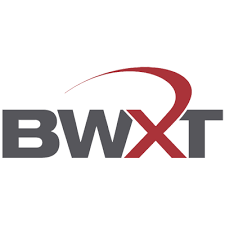 BWX Technologies
|
Failed Defense Filter
|
BWX performs fabrication activities for missile launch tubes for US submarines, which fails the defense filter as this would be classified as weapons related.
|
|
0.61%
|
Pure Play
|
Cameco mines and sells uranium for the purposes of nuclear fuel production.
|
||
|
0.16%
|
Pure Play
|
Canadian Solar sells solar ingots, wafers, cells, modules, panels and other solar power products.
|
||
|
0.12%
|
Pure Play
|
Canoo makes all of its revenue from a range of electric delivery and mutli-purpose vehicles including an electric skateboard.
|
||
|
-
|
Microgrid
|
%20Logo.jpg) Capstone Green Energy
|
Failed Revenue Filter
|
Capstone Green Energy produces microgrids and microturbines with renewable applications, both of which are Drawdown solutions, but receives the majority of its revenue from application of its microturbines to fossil fuel industries.
|
|
-
|
Microgrid
|
%20Logo.jpg) Capstone Turbine
|
Failed Revenue Filter
|
Capstone Turbine produces microgrids and microturbines with renewable applications, both of which are Drawdown solutions, but receives the majority of its revenue from application of its microturbines to fossil fuel industries.
|
|
-
|
Net-zero building
|
%20Logo.jpg) Carlisle Companies
|
Failed Defense Filter
|
Carlisle sells in-flight connectivity applications for military aircrafts, which fails the defense filter because it sells a product to the defense industry that is not a Drawdown solution.
|
|
2.88%
|
Passed Revenue Filter
|
Carrier sells HVAC products including high efficiency heat pumps. It also sells refrigeration services and building systems like those for carbon monoxide detection.
|
||
|
0.28%
|
Passed Revenue Filter
|
Casella Waste Systems derives its revenue in part from recycling, a Drawdown solution, and has landfill gas to energy operations, another Drawdown solution, at over 50% of the landfills it owns. It receives no revenue from products built for the fossil fuel industry.
|
||
|
0.02%
|
Pure Play
|
CBAK makes 100% of its revenue from selling lithium batteries that are used in EV, electric tool, and energy storage applications.
|
||
|
-
|
Electrical Utility
|
%20Logo.png) CenterPoint Energy
|
Failed Utility Filter
|
CenterPoint produces 99.6% of its power from fossil fuels, 0.23% from non fossil fuel combustion, and 0.16% from renewables.
|
|
-
|
Electrical Utility
|
%20Logo.png) Centrais Elétricas Brasileiras - Eletrobrás
|
Failed Utility Filter
|
Centrais Elétricas Brasileiras - Eletrobrás produces 92.45% of its power from renewables, 3.89% from nuclear, and 3.66% from fossil fuels. While it passes the generation mix criteria of > 50% non fossil fuel sources, 0.68% of its power comes from coal and it has no plans to shut down its coal plants within the next 3 years.
|
|
-
|
Electrical Utility
|
%20Logo.png) Central Puerto
|
Failed Utility Filter
|
Central Puerto produces 67.13% of its power from fossil fuels and 32.87% from renewables.
|
|
0.05%
|
Pure Play
|
Centrus sells various components of nuclear fuel eg. parts of low-enriched uranium, and the provision of technical solutions to deploy advanced nuclear fuel production capabilities.
|
||
|
-
|
Nutrient Management
|
%20Logo.jpg) CF Industries Holdings
|
No Drawdown Solution
|
CF Industries creates nitrogen products for agriculture but they do not help promote nutrient management, a Drawdown solution
|
|
0.50%
|
Pure Play
|
ChargePoint sells EV charging solutions like smart charging stations for electric vehicles, which can be used by fleets or individual owners.
|
||
|
-
|
Waste to Energy
|
%20Logo.png) China Recycling Energy
|
Lacks Sufficient Information
|
China Recycling Energy conducts waste to energy operations, but also utilizes gas from coal mining, which is considered as fossil fuel revenue. A revenue breakdown is not present.
|
|
-
|
Bioplastics
|
%20Logo.png) China XD Plastics
|
Failed Revenue Filter
|
China XD Plastics Limited derives the majority of its revenue from traditional plastics like polypropylene.
|
|
-
|
Contraceptives
|
%20Logo.png) Church & Dwight
|
Failed Contraceptive Filter
|
Church & Dwight owns Trojan condoms, but makes less than 50% of its revenue from them, thus failing to pass the contraception filter.
|
|
0.05%
|
Passed Revenue Filter
|
CleanSpark sells distributed energy systems and microgrids, which help optimize energy consumption. It also provides a variety of digital services, including creative design.
|
||
|
0.02%
|
Pure Play
|
ClearOne sells audio conferencing products, as well as sound-reinforcement products that help with connecting virtually.
|
||
|
0.45%
|
Passed Utility Filter
|
Clearway produces 62.68% of its power from renewables and 37.32% from fossil fuels. It produces no power from coal and has exceeded what is required of it by local regulations in regards to renewable portfolios.
|
||
|
-
|
Electrical Utility
|
%20Logo.jpeg) CMS Energy
|
Failed Utility Filter
|
CMS produces 62.73% of its power from fossil fuels, 19.92% from nuclear, 7.67% from mixed sources, and 6.65% from renewables. Even if all of the mixed sources were renewable, CMS would still not have >50% power from non fossil fuel sources.
|
|
-
|
Biofuels
|
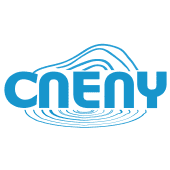 CN Energy Group
|
Fails Biofuel Filter
|
Less than 50% of CN Energy Group's biofuel production is advanced biofuel, leading it to fail the biofuel filter
|
|
0.21%
|
Passed Revenue Filter
|
Comfort Systems USA derives revenue from replacing old HVAC systems with more efficient systems, a Drawdown solution, while creating no products specifically for the fossil fuel industry.
|
||
|
0.24%
|
Passed Revenue Filter
|
Commercial Metals recycles steel and metal products, a Drawdown solution, while building no products specifically for the fossil fuel industry.
|
||
|
1.53%
|
Passed Utility Filter
|
Companhia Energética de Minas Gerais produces 100% of its power from renewable sources. It exceeds state regulations.
|
||
|
-
|
Electrical Utility
|
%20Logo.png) Consolidated Edison
|
Failed Utility Filter
|
Consolidated Edison produces 52.5% of its power from fossil fuels, 37.5% from nuclear, 8.6% from renewables, and 1.3% from unknown sources. Even if all of the unknown sources were renewable, CE would still not have >50% power from non fossil fuel sources.
|
|
-
|
LED
|
.jpg) Corning
|
Lacks Sufficient Information
|
Corning produces LED products and also emissions control products for the fossil fuel industry. It is unclear which is a greater percentage of the revenue.
|
|
-
|
Food Waste
|
%20Logo.png) Corteva
|
No Drawdown Solution
|
BioCorteva's products help maximize crop yield, not reduce food waste, leaving them without a Drawdown solutionceres' products help maximize crop yield, not reduce food waste, leaving them without a Drawdown solution
|
|
-
|
Waste to Energy
|
.png) Covanta
|
Failed Revenue Filter
|
Covanta was acquired by a private entity on Dec 1, 2021 and is therefore removed from the Climate Index. Covanta makes a large portion of its revenue from waste to energy operations, a Drawdown solution. While it does own landfills which do not have >=50% landfill gas capture, these are for the purpose of ash disposal from its WtE operations and it does not appear revenue is derived from these landfills.
|
|
-
|
LED
|
.png) Cree
|
Failed Defense Filter
|
Cree sells materials products and RF devices used in military communications, which fails the defense filter because it sells something to the defense industry that is not a Drawdown solution.
|
|
-
|
Alternative Cement
|
.png) CRH
|
Failed Revenue Filter
|
High-Performance Glass is a small part of their revenue. CRH still makes most of its revenue from conventional cement, concrete and asphalt. They're investing in alternative cement that's lower emission, that's still under 15% of the total material they use to make cement
|
|
0.02%
|
Pure Play
|
Crown's glass changes its opacity and reflectiveness in response to outside weather conditions. Unlike others, Crown's glass also allows for manual control
|
||
|
0.14%
|
Passed Revenue Filter
|
CSW Industrials manufactures products to make HVAC/R systems more efficient, a climate solution, and derives a large portion of its revenue from those products. It derives a much smaller portion of its revenue from sales to oilfields; this would be considered fossil fuel revenue.
|
||
|
-
|
Electric Vehicles
|
%20Logo.png) Cummins
|
Failed Revenue Filter
|
Cummins derives a very small part of its revenue from hydrogen production solutions and electrified power systems, but a much larger portion of its revenue is from ICE parts and oil & gas markets, both of which would be categorized as fossil fuel revenue.
|
|
-
|
LED
|
.jpg) CVD Equipment
|
Failed Defense Filter
|
CVD sells MesoPlasma™ printing services and products (heaters, antennas, and sensors) to the defense industry, which fails the revenue filter because it sells something to the defense industry that is not a Drawdown solution.
|
|
-
|
LED
|
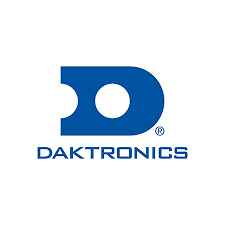 Daktronics
|
No Drawdown Solution
|
Daktronics sells LED displays for various purposes like sports, architecture, and more.
|
|
-
|
Electric Vehicles
|
%20Logo.jpg) Dana
|
Lacks Sufficient Information
|
Dana sells both EV and ICE parts. A revenue breakdown between those two segments is not provided.
|
|
0.09%
|
Pure Play
|
Danimer produces bio-based plastics using microorganisms to create polyesters by feeding them inexpensive plant oils.
|
||
|
0.36%
|
Pure Play
|
Daqo sells high purity polysilicon used in solar photovoltaics to photovoltaic manufacturers.
|
||
|
-
|
Efficient Aviation
|
%20Logo.png) Delta Air Lines
|
No Drawdown Solution
|
While Delta is known for its forward thinking stance on climate, it does not derive any revenue from its sustainability initiatives.
|
|
0.28%
|
Passed Revenue Filter
|
Diodes sells discrete semiconductor products, which are heavily used in the consumer electronics industry, as well as analog products comprising power management devices like LED lighting drivers, which are crucial to an LED circuit.
|
||
|
3.49%
|
Pure Play
|
DocuSign provides an e-signature solution allows for digital signing of agreements and documents, saving many sheets of paper and transit miles
|
||
|
-
|
Electrical Utility
|
%20Logo.png) Dominion Energy
|
Lacks Sufficient Information
|
Dominion did not provide complete enough power generation info to determine if they pass or fail the utility filter
|
|
-
|
Bioplastics
|
%20Logo.png) Dow
|
Lacks Sufficient Information
|
Dow makes both traditional and bioplastics. A revenue breakdown is not present.
|
|
-
|
Electrical Utility
|
%20Logo.jpg) DTE Energy
|
Failed Utility Filter
|
DTE produces 67.13% of its power from fossil fuels, 21.07% from nuclear, 10.26% from nuclear, and 1.54% from renewables.
|
|
-
|
Electrical Utility
|
%20Logo.png) Duke Energy
|
Failed Utility Filter
|
Duke Energy produces 61% of its power from fossil fuels, 37% from nuclear, and 2% from renewable.
|
|
-
|
Solar PVs
|
%20Logo.png) DuPont de Nemours
|
Failed Revenue Filter
|
DuPont de Nemours has some end-markets in solar energy and LEDs, both Drawdown solutions, but derives a larger portion of its revenue from various products that have end-markets in the fossil fuel industry.
|
|
4.19%
|
Passed Revenue Filter
|
Eaton derives the majority of its revenue from improving grid flexibility, a Drawdown solution, through the sale of various electrical and power products. It receives a smaller portion of its revenue from the automotive industry, which would be categorized as fossil fuel revenue.
|
||
|
-
|
Water Distribution
|
 Ecolab
|
Failed Revenue Filter
|
Ecolab offers products that can help businesses conserve water, a Drawdown solution, but also sells products built specifically for the fossil fuel industry. It is unclear which it makes more revenue from
|
|
-
|
Electrical Utility
|
%20Logo.jpg) Edison International
|
Lacks Sufficient Information
|
Edison International did not provide complete enough power generation info to determine if they pass or fail the utility filter
|
|
-
|
Electric Vehicles
|
.png) Electrameccanica Vehicles
|
Failed Revenue Filter
|
Electrameccanica Vehicles has no sales of electric vehicles to date. It has some sales in its custom build segment, which we categorize as fossil fuel revenue.
|
|
-
|
Electrical Utility
|
%20Logo.jpg) Ellomay Capital
|
Failed Utility Filter
|
Ellomay produces 75.5% of its power from fossil fuels, 15.6% from renewables, and 8.5% from non fossil fuel combustion.
|
|
-
|
LED
|
%20Logo.jpg) eMagin
|
Failed Defense Filter
|
eMagin sells weapons sights, which fails the defense filter because this would be categorized as a weapons-related sale.
|
|
-
|
Smart Thermostat
|
%20Logo.png) Emerson Electric
|
Lacks Sufficient Information
|
Emerson Electric Co. produces smart thermostats, a Drawdown solution, but also sells certain products to the oil and gas industry. It is unclear which segment it makes more revenue from.
|
|
-
|
Electrical Utility
|
%20Logo.jpg) Empresa Distribuidora y Comercializadora Norte Sociedad Anónima
|
Lacks Sufficient Information
|
Empresa Distribuidora y Comercializadora Norte Sociedad Anónima did not provide complete enough power generation info to determine if they pass or fail the utility filter
|
|
-
|
Solar PVs
|
%20Logo.png) Enbridge
|
Failed Revenue Filter
|
Enbridge derives some of its revenue from solar and wind energy, both Drawdown solutions, but receives the majority of its revenue from pipeline work for the natural gas industry, which is categorized as fossil fuel revenue.
|
|
-
|
Electrical Utility
|
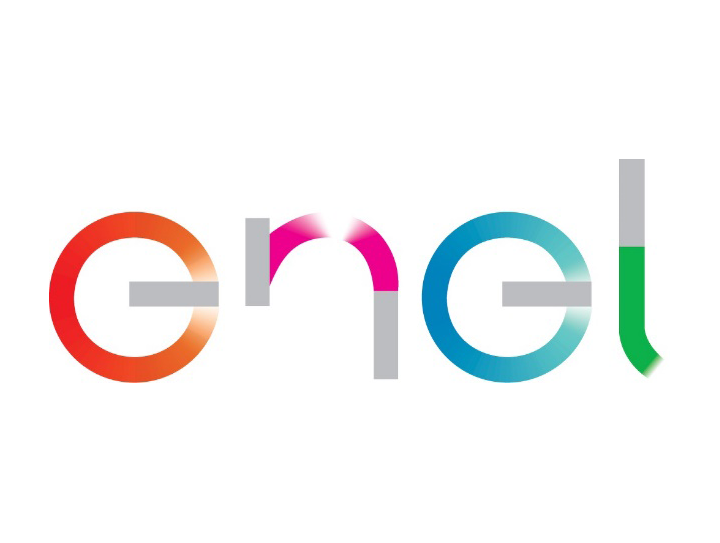 Enel Américas
|
Failed Utility Filter
|
Enel Américas produces 62% of its power from renewables and 38% from fossil fuels. While it passes the generation mix criteria of > 50% non fossil fuel sources, 3% of its power comes from coal and it has no plans to shut down its coal plants within the next 3 years.
|
|
0.19%
|
Passed Utility Filter
|
Enel Chile produces 62% of its power from renewables and 38% from fossil fuels. While it passes the generation mix criteria of > 50% non fossil fuel sources, 4.9% of its power comes from coal, but it has a plan to shut down its coal plants within the next 3 years. It exceeds state regulations.
|
||
|
-
|
LED
|
%20Logo.png) Energizer Holdings
|
No Drawdown Solution
|
Energizer Holdings, makes only batteries for household products and lighting products for flashlights and headlamps, neither of which are Drawdown solutions.
|
|
0.02%
|
Pure Play
|
Energy Focus makes a variety of LED products, such as replacements for fluorescent lamps and retrofits for military facilities.
|
||
|
-
|
Grid Expansion
|
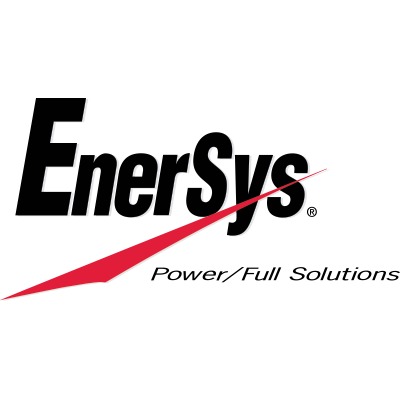 EnerSys
|
Failed Defense Filter
|
EnerSys sells missiles and smart weapons, which fails the defense filter since it sells weapons to the defense industry.
|
|
2.00%
|
Pure Play
|
Enphase sells microinverters, energy monitoring software, and AC battery storage systems to solar distributors, OEMs, homeowners, and more.
|
||
|
-
|
Electrical Utility
|
%20Logo.png) Entergy
|
Failed Utility Filter
|
Entergy produces 61.76% of its power from fossil fuels, 38.01% from nuclear, and 0.23% from renewables.
|
|
0.03%
|
Pure Play
|
Eos makes 100% of its revenue from selling battery storage solutions to utilities (and other customers). Its batteries have 98.2% of capacity retained annually.
|
||
|
-
|
Wind Turbines
|
%20Logo.png) ESCO Technologies
|
Failed Defense Filter
|
ESCO derives its revenue in part from promoting grid flexibility, a Drawdown solution, by enabling electric power grid operators to assess the integrity of high-voltage power delivery equipment. It however receives a larger portion of its revenue from products that have an end-market in commercial aerospace applications.
|
|
-
|
Water Distribution
|
%20Logo.jpg) Euro Tech Holdings
|
Failed Water Filter
|
Euro Tech Holdings does not produce any not leak detection or water conservation technologies and therefore fails our water distribution efficiency filter.
|
|
-
|
Electrical Utility
|
%20Logo.png) Evergy
|
Failed Utility Filter
|
Evergy produces 50% of its power from fossil fuels, 29% from renewables, and 21% from nuclear.
|
|
-
|
Electrical Utility
|
%20Logo.png) Eversource Energy
|
Failed Utility Filter
|
Eversource Energy produces 62.28% of its power from fossil fuels, 19.64% from renewables, 13.83% from non fossil fuel combustion, 4.24% from nuclear, and 0.01% from energy storage.
|
|
0.02%
|
Pure Play
|
Evofem makes 100% of it's revenue from a contraceptive gel. They are also working on a vaginal gel that reduces certain infections.
|
||
|
-
|
Water Distribution
|
%20Logo.jpg) Evoqua Water Technologies
|
Failed Water Filter
|
Evoqua Water Technologies does not produce any not leak detection or water conservation technologies and therefore fails our water distribution efficiency filter.
|
|
3.32%
|
Passed Utility Filter
|
Exelon produces 60.25% of its power from nuclear, 29.77% from fossil fuels, 9.62% from nuclear, and 0.36% from non fossil fuel combustion. It produces no power from coal and exceeds what is required of it by state regulations.
|
||
|
0.02%
|
Pure Play
|
EZGO generates 100% of its revenue from selling e-bicycles, e-tricycles, and lithium batteries to the fast-growing Chinese market.
|
||
|
0.82%
|
Pure Play
|
First Solar sells its unique glass cadmium telluride solar modules as well as power plant solutions.
|
||
|
-
|
Electrical Utility
|
%20Logo.png) FirstEnergy
|
Failed Utility Filter
|
FirstEnergy produces over 95% of its power from fossil fuels. The rest is from renewables.
|
|
0.30%
|
Pure Play
|
Fisker generates 100% of its revenue from selling and leasing luxury and high end electric vehicles.
|
||
|
-
|
Nutrient Management
|
 Flexible Solutions International
|
Lacks Sufficient Information
|
Flexible Solutions International produces nitrogen conservation products, a Drawdown solution, but also produces products for the oil and gas industries. A revenue breakdown is not present
|
|
0.02%
|
Pure Play
|
Flux makes battery management systems and rechargeable lithium-ion energy storage systems for electric forklifts, airport ground support equipment, and other industrial motive applications.
|
||
|
-
|
Food Waste
|
%20Logo.png) FMC
|
No Drawdown Solution
|
FMC's products help protect crops from pests, not reduce food waste, leaving them without a Drawdown solution
|
|
-
|
Electric Vehicles
|
%20Logo.png) Ford Motor
|
Failed Revenue Filter
|
Ford Motor produces some EVs, a Drawdown solution, but receives the majority of its revenue from traditional ICE vehicles, which are categorized as fossil fuel revenue.
|
|
-
|
Electrical Utility
|
%20Logo.jpg) Fortis
|
Lacks Sufficient Information
|
Fortis did not provide complete enough power generation info to determine if they pass or fail the utility filter
|
|
-
|
Water Distribution
|
%20Logo.png) Franklin Electric
|
Failed Water Filter
|
Franklin Electric does not produce any not leak detection or water conservation technologies and therefore fails our water distribution efficiency filter.
|
|
0.05%
|
Pure Play
|
FTC Solar sells solar tracking systems that identifies the best positioning for a solar array to increase energy production.
|
||
|
-
|
Microgrid
|
.jpg) FuelCell Energy
|
Lacks Sufficient Information
|
FuelCell energy makes hydrogen fuel cells, a Drawdown solution. They also sell carbon capture services (but not storage) to the oil and gas industry, which we categorize as fossil fuel revenue. A revenue breakdown between the two is not present
|
|
0.02%
|
Pure Play
|
Fusion Fuel Green makes green hydrogen, while producing zero carbon emissions. While it does sell to natural gas networks, this is to replace fossil fuels with green hydrogen to help them meet decarbonization goals and therefore is not considered fossil fuel revenue.
|
||
|
-
|
Biofuels
|
%20Logo.png) FutureFuel
|
Fails Biofuel Filter
|
Less than 50% of FutureFuel's biofuel production is advanced biofuel, leading it to fail the biofuel filter
|
|
-
|
Energy Storage
|
%20Logo.jpg) Generac Holdings
|
Lacks Sufficient Information
|
Generac Holdings derives part of its revenue from the Drawdown solution of energy storage. It however has fossil fuel profucts and a large natural gas customer base that is not quantified and no revenue breakdown for that segment is present.
|
|
-
|
Wind Turbines
|
%20Logo.png) General Electric
|
Failed Revenue Filter
|
General Electric derived 19.4% of its revenue from wind energy, a Drawdown solution, but received 21.8% of its revenue from various products dependent on oil and gas, which is categorized as fossil fuel revenue.
|
|
-
|
Electric Vehicles
|
%20Logo.png) General Motors
|
Failed Revenue Filter
|
General Motors produces some EVs, a Drawdown solution, but receives the majority of its revenue from traditional ICE vehicles, which are categorized as fossil fuel revenue.
|
|
-
|
Electrical Utility
|
%20Logo.jpg) Genie Energy
|
Lacks Sufficient Information
|
Genie Energy did not provide complete enough power generation info to determine if they pass or fail the utility filter
|
|
-
|
Electric Vehicles
|
%20Logo.png) Genuine Parts
|
Failed Revenue Filter
|
Genuine Parts sells auto parts and while it does seem to service the EV industry in part, its business is mostly oriented towards ICE vehicles. It even lists EV adoption as a risk to its business.
|
|
-
|
Efficient Aviation
|
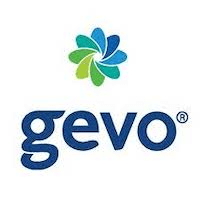 Gevo
|
Fails Biofuel Filter
|
Less than 50% of Gevo's biofuel production is advanced biofuel, leading it to fail the biofuel filter
|
|
1.06%
|
Passed Revenue Filter
|
GFL Environment recycles steel and metal products, a Drawdown solution, while deriving no revenue from products created specifically for the fossil fuel industry.
|
||
|
0.14%
|
Passed Revenue Filter
|
Gibraltar Industries derives its revenue in part from solar PVs, a drawdown solution, through the sale of solar racking and electrical balance of systems, while creating no products specifically for the fossil fuel industry.
|
||
|
-
|
Heat Pumps
|
%20Logo.jpg) Graham
|
No Drawdown Solution
|
Graham builds heat pumps, but not high-efficiency heat pumps, meaning they do not produce a Drawdown solution
|
|
-
|
Water Distribution
|
%20Logo.png) Granite Construction
|
Failed Water Filter
|
Granite Construction does not produce any not leak detection or water conservation technologies and therefore fails our water distribution efficiency filter.
|
|
-
|
Biofuels
|
%20Logo.jpg) Green Plains
|
Fails Biofuel Filter
|
Less than 50% of Green Plain's biofuel production is advanced biofuel, leading it to fail the biofuel filter
|
|
-
|
Electric Vehicles
|
%20logo.jpg) Greenland Technologies Holding
|
No Drawdown Solution
|
Greenland Technologies Holding has yet to produce any electric vehicles since that division was opened in December 2020.
|
|
0.02%
|
Pure Play
|
GreenPower generates 100% of its revenue from electric vehicles for passenger, student, and cargo transportation.
|
||
|
0.30%
|
Pure Play
|
Hannon Armstrong only invests in sustainable projects, from building energy efficient to solar and wind farms.
|
||
|
0.09%
|
Passed Revenue Filter
|
Harsco generates 82% of its revenue from industrial recycling and waste management services, and the rest from maintenance, repair, and construction services for railway tracks.
|
||
|
-
|
Electrical Utility
|
%20Logo.jpg) Hawaiian Electric Industries
|
Failed Utility Filter
|
Hawaiian Electric produces 71.6% of its power from fossil fuels, 23.9% from renewables, and 4.5% from non fossil fuel combustion.
|
|
-
|
Water Distribution
|
%20Logo.png) Helios Technologies
|
Failed Water Filter
|
Helios Technologies does not produce any not leak detection or water conservation technologies and therefore fails our water distribution efficiency filter.
|
|
0.02%
|
Passed Revenue Filter
|
Highway Holdings does metal stampings and manufactures a variety of mechnical and electronic products, including LED power supplies, otherwise known as LED drivers.
|
||
|
-
|
Hybrid Cars
|
%20Logo.png) Honda Motor
|
Failed Revenue Filter
|
Honda Motor produces some EVs, a Drawdown solution, but receives the majority of its revenue from traditional ICE vehicles, which are categorized as fossil fuel revenue.
|
|
-
|
Smart Thermostat
|
%20Logo.jpg) Honeywell International
|
Failed Defense Filter
|
Honeywell has an aerospace segment which is categorized as fossil fuel revenue that comprises a greater portion of its net sales than its production of smart thermostats, a Drawdown solution. They also fail the defense filter.
|
|
-
|
Electrical Utility
|
%20Logo.png) Huaneng Power International
|
Lacks Sufficient Information
|
Huaneng Power did not provide complete enough power generation info to determine if they pass or fail the utility filter
|
|
-
|
Grid Expansion
|
%20Logo.jpg) Hubbell
|
Lacks Sufficient Information
|
Hubbell derives a large part of its revenue from producing solutions that enhance Grid Flexibility, but also has customers in the gas industry whose portion of the revenue is not specified.
|
|
0.02%
|
Pure Play
|
Hudson provides various refrigerant management solutions, including reclamation of refrigerants and hydrostatic testing which checks for leaks.
|
||
|
-
|
Electric Vehicles
|
%20Logo.png) Hyliion Holdings
|
Lacks Sufficient Information
|
Hyliion Holdings derives its revenue by selling electrified and hybrid powertrain solutions, a Drawdown solution, but also sells powertrain systems that can be fueled with CNG, which is considered fossil fuel revenue. The revenue breakdown between these products is not provided.
|
|
0.52%
|
Pure Play
|
IAA allows for the sale of total loss, damaged, and low-value vehicles, as well as their parts, limiting automotive waste and reducing the need for new manufacturing.
|
||
|
-
|
Electrical Utility
|
%20Logo.png) IDACORP
|
Failed Utility Filter
|
IDACORP produces 59.8% of its power from renewables, 32.8% from fossil fuels, and 7.4% from mixed sources. While it passes the generation mix criteria of > 50% non fossil fuel sources even if the entirety of the mixed source power generation was from fossil fuels, 20.9% of its power comes from coal and it has no plans to shut down its coal plants within the next 3 years.
|
|
0.05%
|
Passed Revenue Filter
|
Ideanomics generated 74.6% of its revenue from EVs and EV charging infrastructure and 19.3% from traditional combustion vehicles in 2020.
|
||
|
0.05%
|
Water Distributionlt
|
.png) IDEX
|
No Drawdown Solution
|
IDEX produces fluid and metering technologies, but not water conservation technologies, meaning they do not produce a Drawdown solution.
|
|
-
|
Wind Turbines
|
%20Logo.jpg) IES Holdings
|
Lacks Sufficient Information
|
IES Holdings services both wind energy projects and solar projects, both Drawdown solutions. It also services refineries, which are categorized as fossil fuel revenue. It is unclear which takes up a greater portion of the revenue.
|
|
0.03%
|
Passed Revenue Filter
|
IEA generates 65.2% of its revenue from installing and restoring infrastructure services for wind and solar industries. It also offers heavy civil construction services like road and bridge construction.
|
||
|
0.24%
|
Passed Revenue Filter
|
Installed Building Products sells insulation products, including fiberglass, cellulose, and spray foam. It also sells advanced caulk and sealant products.
|
||
|
0.02%
|
Passed Revenue Filter
|
iSun sells solar engineering, procurement and construction services. It also has an electrical and data segment that is separate from its solar offerings.
|
||
|
0.23%
|
Passed Revenue Filter
|
Itron generates 60.8% of its revenue from device solutions that deal with water measurement and control and networked solutions like smart meters and leak detection products. It builds no products specifically for the fossil fuel industry.
|
||
|
0.17%
|
Pure Play
|
Jinko sells solar modules, silicon wafers, solar cells, recovered silicon materials, and silicon ingots. It also constructs solar projects for power production.
|
||
|
0.02%
|
Pure Play
|
Jiuzi makes all of its revenue from selling EVs and EV sales franchines in China, one of the fastest growing automobile markets on the planet.
|
||
|
3.34%
|
Passed Revenue Filter
|
Manufactures heat pumps and HVAC solutions
|
||
|
0.07%
|
Pure Play
|
Kaltura offers video products that are heavily used in distance learning for virtual classrooms.
|
||
|
0.02%
|
Passed Revenue Filter
|
Kandi generated 61.2% of its revenue from EV parts and electric scooters and 38.8% from traditional offroad vehicles in 2020.
|
||
|
-
|
Bioplastics
|
%20Logo.png) Karat Packaging
|
Lacks Sufficient Information
|
Karat Packaging produces packaging with both traditional and bioplastics. It is unclear which of the two comprise a majority of the revenue.
|
|
-
|
Electrical Utility
|
%20Logo.png) Kenon Holdings
|
Lacks Sufficient Information
|
Kenon Holdings did not provide complete enough power generation info to determine if they pass or fail the utility filter
|
|
-
|
Electrical Utility
|
%20Logo.jpg) Korea Electric Power
|
Lacks Sufficient Information
|
Korea Electric Power did not provide complete enough power generation info to determine if they pass or fail the utility filter
|
|
0.02%
|
Pure Play
|
KULR sells thermal management technologies that are used in the lithium-ion batteries to ensure they stay within safe operating temperatures.
|
||
|
0.02%
|
Pure Play
|
Laird sells plant-based food, such as hydrate coconut water and renew plant-based proteins.
|
||
|
-
|
Hybrid Cars
|
%20Logo.png) Lear
|
Failed Revenue Filter
|
Lear manufactures some electrification products, but 94.1% of its revenue comes from acting as a supplier for traditional automotives.
|
|
0.69%
|
Passed Revenue Filter
|
Lennox sells HVAC systems, which include high effiiciency heat pumps and air conditioners. They also sell refrigeration systems.
|
||
|
-
|
LED
|
.png) LG Display
|
No Drawdown Solution
|
The LEDs that LG makes are all used in their TV and smartphone displays. Tech displays are not a Drawdown solution.
|
|
2.17%
|
Pure Play
|
Li Auto generates 100% of its revenue from selling electric SUV's and luxury vehicles in China, one of the fastest growing markets for SUV's
|
||
|
-
|
Energy Storage
|
.png) Li-Cycle
|
Recent IPO
|
Li-Cycle recycles old lithium-ion batteries to create new ones. Its IPO date was less than six months before the 2022 Climate Index update, leading it to be excluded from this years index.
|
|
0.02%
|
Pure Play
|
Lighbridge focuses on the development of metallic nuclear fuels, which are safer and more economical, while effectively reducing carbon emissions.
|
||
|
0.03%
|
Pure Play
|
Lightning eMotors makes electric fleet medium- and heavy-duty vehicles, such as delivery trucks and shuttle buses, as well as charging stations for EVs.
|
||
|
0.02%
|
Passed Revenue Filter
|
Limbach sells a variety of building solutions, including performing energy audits and retrofits, a Drawdown solution.
|
||
|
-
|
Perennial Staple
|
%20Logo.png) Limoneira
|
Failed Revenue Filter
|
Limoneira 's Drawdown revenue comes from growing avocados, a perennial staple crop. It however derives the vast majority of its total revenue from other non-perennial crops.
|
|
-
|
Efficient Irrigation
|
.png) Lindsay
|
No Drawdown Solution
|
Lindsay sells different irrigation systems and offers repair services for those systems. It also sells moveable barrier systems that help in many applications such as highway reconstruction.
|
|
-
|
Energy Storage
|
%20Logo.jpg) Littelfuse
|
Lacks Sufficient Information
|
Littelfuse, sells products used in EVs and related infrastructure, but also has end markets in the traditional auto industry, as well as the oil and gas industry. A revenue breakdown is not present.
|
|
0.30%
|
Pure Play
|
Livent generates 100% of its revenue from selling lithium compounds with their primary use being lithium batteries.
|
||
|
1.02%
|
Pure Play
|
LKQ scraps totalled cars and sell the reclaimed replacement parts such as bumpers, transmissions, and suspension products, which help reduce waste generation.
|
||
|
0.05%
|
Pure Play
|
Loop converts waste polyethylene terephthalate (PET), often used in food packaging, into virgin quality PET.
|
||
|
-
|
Electric Vehicles
|
%20Logo.png) Lordstown Motors
|
Fraud
|
Lordstown Motors was credibly accused of fraud by a shortselling investor in 2021
|
|
0.02%
|
Passed Revenue Filter
|
LSI generates 67% of its revenue from LEDs for general use in parking garages and restaurants, and the rest from visual image elements for graphic displays.
|
||
|
-
|
Electric Vehicles
|
-1.png) Lucid Motors
|
Recent IPO
|
Lucid makes luxury electric sedans in the United States. Its IPO date was less than six months before the 2022 Climate Index update, leading it to be excluded from this years index.
|
|
-
|
Insulation
|
%20Logo.gif) Lydall
|
No Drawdown Solution
|
Lydall creates insulation for things like car interiors to reduce noise, not to help buildings stay temperate, meaning they produce no Drawdown solution
|
|
-
|
Carpooling
|
%20Logo.jpg) Lyft
|
No Drawdown Solution
|
Lyft theoretically enables rideshareing, a Drawdown solution, but in practice likely increases emissions due to drivers going further from their homes daily to service higher paying regions.
|
|
0.05%
|
Passed Revenue Filter
|
Magnachip Semiconductor derives its revenue in part from the promotion of LEDs and solar PVs, through the sale of LED products and products used with solar PVs. It creates no products specifically for the fossil fuel industry.
|
||
|
-
|
Food Waste
|
%20Logo.jpg) Marrone Bio Innovations
|
No Drawdown Solution
|
Maronne Bio's products help protect crops from pests, not reduce food waste, leaving them without a Drawdown solution
|
|
0.42%
|
Passed Revenue Filter
|
MasTec derives 32.2% of its revenue from promoting wind and solar energy, as well as grid flexibility, all Drawdown solutions, through the installation and construction of power generation facilities and the maintenance of electrical transmission lines and substations. It receives a smaller portion of its revenue (28.3%) for constructing and maintaining pipelines and processing facilities for the fossil fuel industry.
|
||
|
0.07%
|
Pure Play
|
Maxeon sells solar panels and other related components. It has over 1000 solar patents.
|
||
|
-
|
Electrical Utility
|
%20Logo.jpg) MDU Resources Group
|
Failed Utility Filter
|
MDU produces 55.5% of its power from renewables, 25.6% from mixed sources, and 18.87% from renewables. Even if all of the mixed sources were renewable, MDU would still not have >50% power from non fossil fuel sources.
|
|
0.02%
|
Pure Play
|
Meatech 3D develops cultured meat products without animal slaughtering. In this process stem cells are collected without harming the animals, grown in reactors, diffentiated into fat and muscle cells, and finally formed into unstructured cultured meat products.
|
||
|
-
|
Contraceptives
|
%20Logo.jpg) Merck & Co
|
Failed Contraceptive Filter
|
Merck sells prescription medicines, vaccines, animal health products, and more and makes less than 50% of its revenue from contraceptives
|
|
-
|
LED
|
%20Logo.jpg) Methode Electronics
|
No Drawdown Solution
|
Methode sells electronic components like LEDs and sensors to automotive OEMS, external lighting solutions, and telecommunications products.
|
|
-
|
Electrical Utility
|
%20Logo.png) MGE Energy
|
Failed Utility Filter
|
MGE produces 85.93% of its energy from fossil fuels and 14.07% from renewables.
|
|
0.10%
|
Passed Utility Filter
|
Montauk produces 100% of its power from non fossil fuel combustion. It produces no power from coal and has exceeded what is required of it by local regulations in regards to renewable portfolios.
|
||
|
-
|
Water Distribution
|
%20Logo.jpg) Montrose Environmental Group
|
Lacks Sufficient Information
|
Montrose helps clients deal with water distribution issues among other pro-climate projects, but it also works with many oil and gas companies. It is unclear what makes up a majority of its revenue.
|
|
-
|
Water Distribution
|
 Mueller Industries
|
Failed Water Filter
|
Mueller Industries does not produce any not leak detection or water conservation technologies and therefore fails our water distribution efficiency filter.
|
|
-
|
Water Distribution
|
.png) Mueller Water Products
|
Lacks Sufficient Information
|
Mueller Water Products, sells water leak detection systems, a Drawdown solution, but also has an infrastructure segment that has some customers in the natural gas industry. A breakdown of that segment is not present.
|
|
-
|
Grid Expansion
|
 MYR Group
|
Lacks Sufficient Information
|
limited gas construction services in T&D segment. No further breakdown of end-markets is given
|
|
-
|
Electrical Utility
|
%20Logo.jpg) National Grid
|
Lacks Sufficient Information
|
Korea Electric Power did not provide complete enough power generation info to determine if they pass or fail the utility filter
|
|
0.21%
|
Passed Revenue Filter
|
NexGen owns uranium exploration & development projects in Canada, and wholly or partially owns 4 subsidiaries that are engaged in the same business. But NXE is a capital pool . IPO'd on NYSE in March 2017. NexGen is still in the exploration and development stage and has not yet made any revenue.
|
||
|
5.00%
|
Passed Utility Filter
|
NextEra produces 49.98% of its power from fossil fuels, 39.42% from renewables, 10.59% from nuclear, and 0.01% from non fossil fuel combustion. While it passes the generation mix criteria of > 50% non fossil fuel sources, 2.47% of its power comes from coal, but it has a plan to shut down its coal plants within the next 3 years. It exceeds state regulations.
|
||
|
0.42%
|
Passed Utility Filter
|
NextEra Energy Partners produces 100% of its power from renewables. None of its power comes from coal and it goes beyond requirements by local regulations on renewable portfolios.
|
||
|
-
|
Electric Vehicles
|
%20Logo.png) Nikola
|
Fraud
|
Nikola was credibly accused of fraud by whistleblower investors in 2020
|
|
4.12%
|
Pure Play
|
NIO produces electric SUVs and sedans for the Chinese market plus enable customers to swap their batteries using a subscription instead of needing to recharge.
|
||
|
-
|
Electrical Utility
|
%20Logo.png) NiSource
|
Failed Utility Filter
|
NiSource produces 97.1% of its power from fossil fuels and 2.92% from renewables.
|
|
0.12%
|
Pure Play
|
Niu generates 100% of its revenue from selling their electric-scooters. They have over 800,000 active riders using their products.
|
||
|
-
|
Electrical Utility
|
%20Logo.gif) NorthWestern
|
Failed Utility Filter
|
Northwestern produces 61% of its power from renewables and 29% from fossil fuels. While it passes the generation mix criteria of > 50% non fossil fuel sources, 20% of its power comes from coal and it has no plans to shut down its coal plants within the next 3 years.
|
|
-
|
Electrical Utility
|
%20Logo.jpg) NRG Energy
|
Failed Utility Filter
|
NRG produces 86% of its power from fossil fuels, 9% from renewables, and 5% from nuclear.
|
|
0.02%
|
Pure Play
|
Nuvve sells vehicle to grid technology that allows EV owners to store and resell energy to the grid.
|
||
|
-
|
Water Distribution
|
%20Logo.jpg) NV5 Global
|
Lacks Sufficient Information
|
NV5 helps clients achieve net zero emissions in their buildings and deal with water distribution issues among other pro-climate projects, but it also works with many oil and gas companies. It is unclear what makes up a majority of its revenue.
|
|
-
|
Grid Expansion
|
.png) nVent Electric
|
Failed Defense Filter
|
nVent Electric sells military aerospace systems, battlefield networks and shipboard targeting systems, and combat aircrafts, which fails the defense filter since these products would be classified as weapons related.
|
|
0.02%
|
Passed Revenue Filter
|
O2Micro sells integrated circuits that have many applications including LEDs, zero emission vehicles, phones, and more.
|
||
|
0.49%
|
Pure Play
|
Oatly sells plant-based dairy products made from oats.
|
||
|
-
|
Contraceptives
|
%20Lovo.jpg) ObsEva SA
|
No Drawdown Solution
|
ObsEva makes health and pregnacy-related products, but not contraceptives, meaning it does make a Drawdown solution
|
|
-
|
Ocean Power
|
 Ocean Power Technologies
|
Failed Revenue Filter
|
Ocean Power Technologies utilizes ocean power to provide electricity, a Drawdown solution. But 87% of its revenue comes from servicing the fossil fuel industry.
|
|
-
|
Electrical Utility
|
%20Logo.jpg) OGE Energy
|
Failed Utility Filter
|
OGE produces 89% of its power from fossil fuels and 11% from renewables.
|
|
-
|
Electric Vehicles
|
ON Semiconductor
|
No Drawdown Solution
|
ON manufacturs semiconductors for many industries, none of them specifically being Drawdown solutions.
|
|
0.02%
|
Passed Revenue Filter
|
Orbital gnerated 55.9% of its revenue from engineering, procurement, and construction services for utility-scale solar and the maintenance of electric power transmission and distribution infrastructure. It made 44.1% from designs, installs, and commissions industrial gas sampling, measurement and delivery systems.
|
||
|
0.02%
|
Passed Revenue Filter
|
Orion Energy Systems, derives its revenue in part from LED lighting products and works on retrofit projects, both of which are Drawdown solutions. It creates no products specifically for the fossil fuel industry.
|
||
|
0.26%
|
Pure Play
|
Ormat produces goethermal energy systems that enable utilities to generate electricity using the heat of the earth.
|
||
|
-
|
Electrical Utility
|
%20Logo.png) Otter Tail
|
Failed Utility Filter
|
Otter Tail produces 70.68% of its power from fossil fuels and 29.32% from renewables.
|
|
0.61%
|
Passed Revenue Filter
|
Owens Corning derives its revenue in part from insulation, a drawdown solution, while receiving no revenue from products specifically for the fossil fuel industry. The rest of its revenue comes from other building products like glass fiber materials.
|
||
|
-
|
Electrical Utility
|
%20Logo.jpg) Pampa Energía
|
Failed Utility Filter
|
Pampa produces 85% of its power from fossil fuels and 15% from renewables.
|
|
-
|
Water Distribution
|
 Pentair
|
Failed Water Filter
|
Pentair offers products that can help businesses conserve water, a Drawdown solution, but also sells products built specifically for the fossil fuel industry such as fracking fluids. It is unclear which it makes more revenue from.
|
|
-
|
Water Distribution
|
 Perma-Pipe International
|
Failed Water Filter
|
Perma-Pipe International does not produce any not leak detection or water conservation technologies and therefore fails our water distribution efficiency filter.
|
|
-
|
Contraceptives
|
%20Logo.png) Pfizer
|
Lacks Sufficient Information
|
It is unclear what the revenue breakdown of Pfizer's contraceptive and non-contraceptive products is.
|
|
1.48%
|
Passed Utility Filter
|
PG&E produces 52% of its power from renewables, 44% from nuclear, and 3% from non fossil fuel combustion. It does not produce any of its power from coal and goes beyond what is required by state regulation for energy portfolios.
|
||
|
0.09%
|
Passed Revenue Filter
|
PGT sells aluminum frames, energy efficient glass, and other window related products that helps buildings save energy through better insulation
|
||
|
-
|
Electrical Utility
|
%20Logo.jpg) Pinnacle West Capital
|
Failed Utility Filter
|
Pinnacle produces 64.19% of its power from fossil fuels, 27.81% from nuclear, and 8% from renewables.
|
|
-
|
Biofuels
|
%20Logo.png) Planet Green Holdings
|
Fails Biofuel Filter
|
Less than 50% of Planet Green's biofuel production is advanced biofuel, leading it to fail the biofuel filter
|
|
1.41%
|
Pure Play
|
Plug Power develops hydrogen fuel cell turnkey solutions through hydrogen fueling systems, proton exchange membrane technologies, and more.
|
||
|
-
|
Electrical Utility
|
%20Logo.png) PNM Resources
|
Failed Utility Filter
|
PNM produces 62.6% of its power from fossil fuels, 23.1% from renewables, and 14.3% from nuclear.
|
|
-
|
Grid Expansion
|
%20Logo.png) Polar Power
|
Lacks Sufficient Information
|
Polar Power, manufactures DC power systems that help with grid flexibility, a Drawdown solution, but diesel, natural gas, and propane appear to the predominant formats. A revenue breakdown is not present.
|
|
-
|
Electrical Utility
|
%20Logo.jpg) Portland General Electric
|
Failed Utility Filter
|
Portland GE produces 50.19% of its power from fossil fuels, 27.81% from nuclear, 14% from mixed sources, and 8% from renewables. Even if all of the power produced from mixed sources was from renewables, Portland still would not produce > 50% of its power from non fossil fuel sources.
|
|
0.40%
|
Passed Revenue Filter
|
Power Integrations sells analog and mixed-signal integrated circuits among other electronic circuitry, applications of which include LCD monitors, computers, and LED lighting.
|
||
|
-
|
Electrical Utility
|
%20Logo.png) PPL
|
Failed Utility Filter
|
PPL produces 98.85% of its power from fossil fuels and 1.15% from renewables.
|
|
0.02%
|
Passed Revenue Filter
|
Preformed Line Products derives the majority of its revenue from improving grid flexibility, a Drawdown solution, through the maintenance of energy networks, while creating no products specifically for the fossil fuel industry.
|
||
|
0.16%
|
Pure Play
|
Proterra generates 100% of its revenue from building and selling electric vehicles, including electric buses used in mass transit
|
||
|
-
|
Electrical Utility
|
%20Logo.jpg) Public Service Enterprise Group
|
Failed Utility Filter
|
Public produces 54.91% of its power from fossil fuels, 40.41% from nuclear, 3.84% from renewables, 0.81% from non fossil fuel combustion, and 0.02% from fossil fuels.
|
|
0.10%
|
Pure Play
|
PureCycle converts waste polypropylene (PP), often used in packaging and clothing, into virgin quality PP.
|
||
|
0.05%
|
Passed Revenue Filter
|
PyroGenesis derives its revenue in part from plasma torches (for use in battery production) and waste to energy operations, both Drawdown solutions. It derives no revenue products built specifically for the fossil fuel industry.
|
||
|
1.08%
|
Passed Revenue Filter
|
Quanta Services, derives 69.4% revenue from improving grid flexibility, a Drawdown solution, through various services, including the maintenance of electric power transmission and distribution infrastructure and substation facilities. It receives a smaller portion of its revenue (30.6%) from maintaining natural gas and oil distribution networks, which would be categorized as fossil fuel revenue.
|
||
|
0.78%
|
Pure Play
|
QuantumScape is fully focused on developign and selling solid-state lithium-metal batteries, some of which are used for EVs.
|
||
|
0.02%
|
Pure Play
|
Quest provides recycling services for a variety of items, including scrap tires, metal, and glass.
|
||
|
0.03%
|
Pure Play
|
ReneSola constructs solar projects and sells project rights. It also owns some its own solar projects which generate electricity that is sold to customers.
|
||
|
0.21%
|
Passed Biofuel Filter
|
Over 50% of REGI's revenue comes from advanced biofuels made from low carbon feedstocks that emit 75% less carbon that gasoline.
|
||
|
-
|
Recycling
|
%20Logo.png) Republic Services
|
Failed Landfill Filter
|
Republic derives its revenue in part from recycling, a Drawdown solution, but captures landfill gas at fewer than 50% of its landfills, thus failing the landfill gas filter.
|
|
0.02%
|
Pure Play
|
Research Frontiers develops suspended particle device light control technology that undergirds dynamic glass technology.
|
||
|
-
|
Net-zero building
|
%20Logo.jpg) Resideo Technologies
|
No Drawdown Solution
|
Resideo tech makes wifi-connected thermostats, but not smart thermostates, the Drawdown solution
|
|
0.02%
|
Passed Revenue Filter
|
ReTo Eco-Solutions manufactures environmentally friendly construction materials using less cabon intensive alternative materials, eg. making cement with fly ash. Its products are have a variety of end uses, including water absorption, flood control, and water retention.
|
||
|
-
|
Biofuels
|
%20Logo.png) REX American Resources
|
Fails Biofuel Filter
|
Less than 50% of Rex American's biofuel production is advanced biofuel, leading it to fail the biofuel filter
|
|
-
|
Water Distribution
|
%20Logo.jpg) Rexnord
|
Failed Water Filter
|
Rexnord does not produce any not leak detection or water conservation technologies and therefore fails our water distribution efficiency filter.
|
|
-
|
Electric Vehicles
|
-1.png) Rivian Automotive
|
Recent IPO
|
Rivian makes electric pickup trucks, SUVs, and delivery vehicles. Its IPO date was less than six months before the 2022 Climate Index update, leading it to be excluded from this years index.
|
|
0.03%
|
Passed Revenue Filter
|
Romeo makes 65% of its revenue from lithium-ion battery modules for commercial electric vehicles and 35% in a jointe venture focused on traditional automobiles.
|
||
|
-
|
Water Distribution
|
.jpg) Roper Technologies
|
Failed Water Filter
|
Roper Technologies does not produce any not leak detection or water conservation technologies and therefore fails our water distribution efficiency filter.
|
|
0.02%
|
Pure Play
|
Save Foods sells post-harvest food acid and oxidizer blends that extend the shelf life of food, preventing food waste.
|
||
|
0.02%
|
Pure Play
|
SemiLEDs sells LED chips, components, and modules, which are used for general lighting, horticulture, polymer curing, and more.
|
||
|
2.61%
|
Passed Utility Filter
|
Sempra produces 52% of its power from renewables and 48% from fossil fuels. It produces no power from coal and has exceeded what is required of it by local regulations in regards to renewable portfolios.
|
||
|
-
|
LED
|
%20Logo.png) SGOCO Group
|
No Drawdown Solution
|
SGOCO made zero revenue from their Drawdown solution, their LED business, in 2020
|
|
0.33%
|
Pure Play
|
Shoals sells electrical balance of system solutions for solar energy projects.
|
||
|
-
|
Nutrient Management
|
%20Logo.png) Sociedad Química y Minera de Chile
|
No Drawdown Solution
|
Sociedad Química y Minera de Chile sells fertilizer but not in a way that promotes nutrient management, meaning they do not produce a Drawdown solution.
|
|
1.18%
|
Pure Play
|
SolarEdge Technologies sells DC inverter systems for PVs among other solar products, EV charging solutions, lithium-ion cells and batteries, and uninterrupted power supply solutions.
|
||
|
-
|
Electrical Utility
|
%20Logo.jpg) Spark Energy
|
Failed Utility Filter
|
Spark produces 59.65% of its power from fossil fuels, 34.47% from nuclear, 4.82% from renewables, 1.03% from non fossil fuel combustion, and 0.03% from fuel cells.
|
|
0.02%
|
Pure Play
|
SPI Energy constructs solar projects for other power producers, owns its own solar projects which generate electricity that sells to utilities and other customers, and makes and sells both EVs and EV charging infrastructure.
|
||
|
0.17%
|
Passed Revenue Filter
|
SPX makes electrical transformers that enable the grid to expand. It also installs HVAC systems and underground pipe and cable locators.
|
||
|
-
|
LED
|
%20Logo.png) Steel Partners Holdings
|
Lacks Sufficient Information
|
Steel Partners Holdings L.P. produces LEDs, a Drawdown solution, but also produces tubing for the oil and gas industry, which is considered fossil fuel revenue. It also produces blades for meat/fish processing plants.
|
|
-
|
Electric Vehicles
|
%20Logo.png) Stellantis N.V.
|
Failed Revenue Filter
|
Stellantis N.V. produces some EVs, a Drawdown solution, but receives the majority of its revenue from traditional ICE vehicles, which we categorize as fossil fuel revenue.
|
|
0.19%
|
Pure Play
|
Stem makes it easy for buildings to most efficiently switch from onsite, to stored, to grid electricity with their artificial intelligence powered analytics platform that optimizes energy usage.
|
||
|
-
|
Water Distribution
|
.jpg) Sterling Construction
|
Failed Water Filter
|
Sterling Construction does not produce any not leak detection or water conservation technologies and therefore fails our water distribution efficiency filter.
|
|
0.31%
|
Pure Play
|
Sunnova is a leading residential solar in the US
|
||
|
0.05%
|
Pure Play
|
SunOpta sells plant-based foods and beverages, many of which use almond, soy, coconut, oat, or hemp.
|
||
|
0.36%
|
Pure Play
|
SunPower sells electricity generated from solar as well as solar energy solutions and inverters. Some of its main customers include electrical utilities and
|
||
|
0.76%
|
Pure Play
|
Sunrun sells solar energy systems, such as panels, and also sells battery storage systems, primarily to residential homeowners..
|
||
|
0.02%
|
Pure Play
|
Sunworks sells photovoltaic systems for power production for residential and commercial and industrial clients.
|
||
|
-
|
Electric Vehicles
|
%20Logo.png) Tantech Holdings
|
No Drawdown Solution
|
Tantech Holdings put a hold on manufacturing electric vehicles, meaning they do not produce a Drawdown solution
|
|
-
|
Electric Vehicles
|
%20Logo.png) Tata Motors
|
Failed Revenue Filter
|
Tata Motors Limited produces some EVs, a Drawdown solution, but receives 99.8% of its revenue from traditional ICE vehicles, which are categorized as fossil fuel revenue.
|
|
-
|
Plant-based diet
|
.jpg) Tattooed Chef
|
No Drawdown Solution
|
Tattooed Chef, sells vegetarian/vegan products, but in order to count towards the Drawdown solution of promoting a plant-based diet, a must not make products that include animal products.
|
|
0.09%
|
Passed Revenue Filter
|
Tecnoglass sells a range of high performance windows and derives no revenue from products dependent upon the fossil fuel industry.
|
||
|
5.00%
|
Pure Play
|
Tesla generates 100% of its revenue from Drawdown solutions: electric vehicles, solar energy generation, and energy storage products.
|
||
|
-
|
Water Distribution
|
%20Logo.png) Tetra Tech
|
Lacks Sufficient Information
|
Tetra Tech helps clients achieve net zero emissions in their buildings among other pro-climate projects, but it also works with many oil and gas companies. It is unclear what makes up a majority of its revenue.
|
|
-
|
Contraceptives
|
%20Logo.jpg) Teva Pharmaceutical Industries
|
Lacks Sufficient Information
|
It is unclear what the revenue breakdown of Teva's contraceptive and non-contraceptive products is.
|
|
-
|
Electrical Utility
|
%20Logo.jpg) The AES
|
Failed Utility Filter
|
AES produces 78% of its power from fossil fuels and 22% from renewables.
|
|
-
|
Contraceptives
|
%20Logo.jpg) The Cooper Companies
|
Failed Contraceptive Filter
|
Cooper sells healthcare products like contact lenses, fertility products, and contraceptives, but makes less than 50% of its revenue from contraceptives
|
|
-
|
Heat Pumps
|
%20Logo.png) The Gorman-Rupp
|
No Drawdown Solution
|
Gormann-Rupp builds heat pumps, but not high-efficiency heat pumps, meaning they do not produce a Drawdown solution
|
|
0.28%
|
Passed Revenue Filter
|
Hain sells a variety of plant-based snack products like tortilla chips, whole grain chips, and pita chips.
|
||
|
0.17%
|
Pure Play
|
Lion Electric sells all-electric medium and heavy-duty urban vehicles like trucks and buses to electrify mass transportation.
|
||
|
-
|
Energy Storage
|
.png) The Metals Company
|
Recent IPO
|
The Metals Company mines deep sea metals that are rare and critical for batteries. Its IPO date was less than six months before the 2022 Climate Index update, leading it to be excluded from this years index.
|
|
-
|
Electrical Utility
|
%20Logo.png) The Southern
|
Failed Utility Filter
|
The Southern produces 68% of its power from fossil fuels, 17% from nuclear, and 15% from coal.
|
|
-
|
Contraceptives
|
%20Logo.png) TherapeuticsmMD
|
Lacks Sufficient Information
|
It is unclear what the revenue breakdown of TherapeuticsmMD's contraceptive and non-contraceptive products is.
|
|
0.54%
|
Passed Revenue Filter
|
TopBuild sells insulation products for buidlings, as well as other home products like rain gutters, glass, and afterpaint. It makes no revenue specifically from serving the fossil fuel industry
|
||
|
-
|
Hybrid Cars
|
%20Logo.png) Toyota Motor
|
Failed Revenue Filter
|
Toyota Motor produces some EVs, a Drawdown solution, but receives the majority of its revenue from traditional ICE vehicles, which we categorize as fossil fuel revenue.
|
|
0.09%
|
Passed Revenue Filter
|
TPI Composities generates 96% of its revenue from composite wind blades and related precision molding and assembly systems and the rest from manufacturing composite structures for automotive companies.
|
||
|
2.74%
|
Passed Revenue Filter
|
Trane sells various HVAC products including high efficiency heat pumps, a Drawdown solution.
|
||
|
-
|
Electrical Utility
|
%20Logo.jpg) TransAlta
|
Failed Utility Filter
|
TransAlta produces 65% of its power from fossil fuels and 35% from renewables.
|
|
-
|
Electric Vehicles
|
%20Logo.jpg) Trimble
|
No Drawdown Solution
|
Trimble does not build any of its products for EV's specifically, meaning it does not offer a Drawdown solution
|
|
-
|
Mass Transit
|
.jpg) Tutor Perini
|
Failed Defense Filter
|
Tutor Perini builds military defense facilities, which fails the defense filter because it sells a product/service to the military that is not a Drawdown solution.
|
|
-
|
Carpooling
|
%20Logo.jpg) Uber Technologies
|
No Drawdown Solution
|
Uber theoretically enables rideshareing, a Drawdown solution, but in practice likely increases emissions due to drivers going further from their homes daily to service higher paying regions.
|
|
-
|
Electric Vehicles
|
%20Logo.png) Ultralife
|
Failed Defense Filter
|
Ultralife derives the majority of its revenue from the promotion of electric vehicles and energy storage, both Drawdown solutions, through the sale of lithium batteries and electric vehicle charging solutions. It also makes scopes for rifles and SATCOM communications for the defense industry, leading it to fail the defense filter
|
|
-
|
Electrical Utility
|
%20Logo.png) Unitil
|
Lacks Sufficient Information
|
Unitil did not provide complete enough power generation info to determine if they pass or fail the utility filter.
|
|
0.56%
|
Passed Revenue Filter
|
Universal Display sells LED products for display and solid-state lighting applications. It also provides contract research services for chemical materials synthesis.
|
||
|
0.03%
|
Pure Play
|
Ur-Energy explores uranium mineral properties and has a stake in 12 projects in the U.S, helping power nuclear energy, a Drawdown solution.
|
||
|
0.05%
|
Passed Revenue Filter
|
Uranium Energy extracts and processes uranium, helping power the nuclear energy industry, as well as and titanium concentrates.
|
||
|
-
|
Recycling
|
%20Logo.jpg) US Ecology
|
Failed Landfill Filter
|
US Ecology, does not have landfill gas to energy operations in a majority of its landfills, thus failing the landfill gas filter.
|
|
0.33%
|
Passed Revenue Filter
|
Valmont Industries, derives its revenue in part from irrigation efficiency and improving grid flexibility, both Drawdown solutions, through the sale of precision irrigation solutions and structures for utility transmission and distribution, while receiving no revenue from products specifically built for the fossil fuel industry.
|
||
|
0.07%
|
Passed Revenue Filter
|
Veeco sells semiconductor and thin film process equipment, which can be used to make a variety of products including solar PVs, LEDs, and laser diodes.
|
||
|
-
|
Grid Expansion
|
%20Logo.png) Vertiv Holdings
|
Lacks Sufficient Information
|
Vertiv Holdings Co improves grid flexibility, but has some customers in the fossil fuel industry whose portion of the revenue is not given.
|
|
0.03%
|
Passed Contraceptive Filter
|
Veru makes more than 50% of its revenue from selling contraceptives and also develops medicines related to prostate and breast cancer.
|
||
|
-
|
Grid Expansion
|
%20Logo.jpg) Vicor
|
Failed Defense Filter
|
Vicor sells defense electronics, which fails the defense filter because it sells a product to the defense industry that is not a Drawdown solution.
|
|
0.09%
|
Pure Play
|
View's dynamic glass is cloud-connected, automated, and allows for control of settings through smart devices in order to adjust for heat, lighting, and more.
|
||
|
0.05%
|
Passed Revenue Filter
|
Village Farms sells greenhouse grown produce and conducts cannabis operations. It also operates a methane digester power plant and sells electricity generated from the plant to the British Columbia Hydro and Power Authority.
|
||
|
-
|
Smart Thermostat
|
%20Logo.jpg) Viomi Technology
|
No Drawdown Solution
|
Viomi does not sell smart themostats, meaning they do not produce a Drawdown solution
|
|
-
|
Electrical Utility
|
%20Logo.jpg) Vistra
|
Failed Utility Filter
|
Vista produces 88.4% of its power from fossil fuels, 11.3% from nuclear, and 0.3% from renewables.
|
|
0.12%
|
Passed Revenue Filter
|
Vivint sells cloud-enabled smart home operating systems that enable home owners to run their HVAC and other systems with less energy.
|
||
|
-
|
Electrical Utility
|
%20Logo.png) VivoPower International
|
Lacks Sufficient Information
|
VivoPower did not provide complete enough power generation info to determine if they pass or fail the utility filter.
|
|
2.26%
|
Passed Revenue Filter
|
Waste Connections passes the landfill gas filter, but has no revenue breakdown present for its clean-up of oilfields, which is categorized as fossil fuel revenue.
|
||
|
4.27%
|
Passed Landfill Filter
|
Waste Management has 146 out of 268 landfill operations equipped with a landfill gas capture to energy project, meaning it has the majority needed to pass the landfill filter.
|
||
|
0.40%
|
Passed Revenue Filter
|
Watts sells generated 52% of its revenue residential & commercial leak detection and water quality monitoring products, and less than 30% of its revenue from gas products like boilers.
|
||
|
-
|
Electrical Utility
|
%20Logo.jpg) WEC Energy Group
|
Failed Utility Filter
|
WEC produces 62.2% of its power from fossil fuels, 19.6% from nuclear, 8.4% from mixed sources, and 7.4% from renewables. Even if all power produced from mixed sources was from renewables, WEC would still not have >50% power from non fossil fuel sources.
|
|
0.42%
|
Passed Revenue Filter
|
WESCO sells basic grid upgrade equipment like wires and cables but also smart grid products and range of transformers and distribution hardware.
|
||
|
-
|
Mass Transit
|
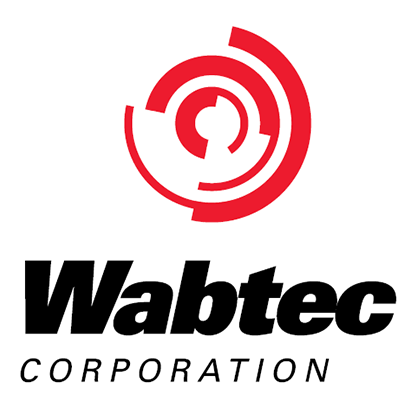 Westinghouse Air Brake Technologies
|
No Drawdown Solution
|
|
|
0.02%
|
Pure Play
|
Westwater Resources generates 100% of its revenue from selling battery-ready graphite materials, a key component in battery construction.
|
||
|
-
|
Plant-based diet
|
%20Logo.jpg) Whole Earth Brands
|
Fails Tobacco Filter
|
Whole Earth Brands makes plant-based consumer packaged goods, but it also makes flavored products used by the tobacco industry, thus failing the tobacco filter
|
|
0.03%
|
Passed Revenue Filter
|
Wildan provides consulting services to clients for primarily for energy efficiency goals, grid optimization, and building retrofits, plus provides civil engineering consulting services as well.
|
||
|
-
|
Nuclear Power
|
%20Logo.jpg) Williams Industrial Services Group
|
Lacks Sufficient Information
|
Williams Industrial Services Group maintains nuclear projects and some renewable projects, but also works on fossil fuel plants. It is unclear which is a majority of their revenue.
|
|
-
|
Electric Vehicles
|
.png) Workhorse Group
|
Fraud
|
Workhorse Group was credibly accused of fraud by a shortselling investor in 2021
|
|
-
|
Electrical Utility
|
%20Logo.png) Xcel Energy
|
Failed Utility Filter
|
Xcel produces 53% of its power from fossil fuels, 30% from renewables, 13% from nuclear, and 4% from mixed sources. Even if all of the power produced from mixed sources was from renewables, Xcel still would not produce > 50% of its power from non fossil fuel sources.
|
|
0.05%
|
Pure Play
|
XL Fleet. sells various EV products, such as hybrid electric drive systems and electrification-as-a-service, and lithium-ion battery packs. Over 150 million miles have been driven on XL's hybrid systems.
|
||
|
2.55%
|
Pure Play
|
XPeng sells electric vehicles, including electric sedans for the fast growing Chinese market.
|
||
|
1.49%
|
Passed Revenue Filter
|
Xylem sells water infrastructure services related to transport and treatment, applied water solutions, and measurement & control solutions like leak detection and remote monitoring. They create no products specifically for the fossil fuel industry.
|
||
|
4.94%
|
Pure Play
|
Zoom offers video, phone, and chat communications technology and services.
|
||
|
-
|
Bioplastics
|
%20Logo.png) Zymergen
|
Lacks Sufficient Information
|
Zymergen biofacturing and bio-based products like adhesives largely for electronics, but not creation of bioplastics. They IPO'd in April 2021, lack an annual report/investor presentation/description of their products & services
|
%20Logo.jpg)
%20logo.jpeg)
%20Logo.jpg)
%20Logo.png)
%20Logo.png)
%20Logo.jpg)

%20Logo.png)
%20Logo.jpg)
%20Logo.png)

%20Logo.png)
%20Logo.png)
%20Logo.png)
%20Logo.png)
%20Logo.png)
%20Logo.jpg)
.png)
%20Logo.jpg)
%20Logo.png)
%20Logo.jpg)
%20Logo.png)
.jpg)

%20Logo.jpg)
%20Logo.jpg)
%20Logo.jpg)
%20Logo.png)
%20Logo.png)
%20Logo.png)
%20Logo.jpg)
%20Logo.png)
%20Logo.png)
%20Logo.png)
%20Logo.jpeg)

%20Logo.png)
.jpg)
%20Logo.png)
.png)
.png)
.png)
%20Logo.png)
.jpg)

%20Logo.jpg)
%20Logo.png)
%20Logo.png)
%20Logo.png)
%20Logo.jpg)
%20Logo.png)
%20Logo.png)

%20Logo.jpg)
.png)
%20Logo.jpg)
%20Logo.jpg)
%20Logo.png)
%20Logo.jpg)
%20Logo.png)

%20Logo.png)

%20Logo.png)
%20Logo.png)
%20Logo.jpg)
%20Logo.png)
%20Logo.png)
%20Logo.jpg)
%20Logo.png)

%20Logo.png)
%20Logo.png)
%20Logo.jpg)
%20Logo.png)
.jpg)
%20Logo.png)
%20Logo.jpg)
%20Logo.png)
%20Logo.png)
%20Logo.jpg)
%20Logo.png)

%20Logo.jpg)
%20Logo.png)
%20Logo.jpg)
%20logo.jpg)
%20Logo.jpg)
%20Logo.png)
%20Logo.png)
%20Logo.jpg)
%20Logo.png)
%20Logo.jpg)
%20Logo.png)
%20Logo.png)
.png)
%20Logo.jpg)
%20Logo.png)
%20Logo.png)
%20Logo.jpg)
%20Logo.png)
.png)
.png)
%20Logo.png)
.png)
%20Logo.jpg)
%20Logo.png)
-1.png)
%20Logo.gif)
%20Logo.jpg)
%20Logo.jpg)
%20Logo.jpg)
%20Logo.jpg)
%20Logo.jpg)
%20Logo.png)
%20Logo.jpg)

.png)

%20Logo.jpg)
%20Logo.png)
%20Logo.png)
%20Logo.gif)
%20Logo.jpg)
%20Logo.jpg)
.png)
%20Lovo.jpg)

%20Logo.jpg)
%20Logo.png)
%20Logo.jpg)


%20Logo.png)
%20Logo.jpg)
%20Logo.png)
%20Logo.png)
%20Logo.png)
%20Logo.jpg)
%20Logo.png)
%20Logo.jpg)
%20Logo.png)
%20Logo.jpg)
%20Logo.png)
%20Logo.jpg)
-1.png)
.jpg)
%20Logo.png)
%20Logo.png)
%20Logo.jpg)
%20Logo.png)
%20Logo.png)
.jpg)
%20Logo.png)
%20Logo.png)
.jpg)
%20Logo.png)
%20Logo.jpg)
%20Logo.jpg)
%20Logo.jpg)
%20Logo.png)
.png)
%20Logo.png)
%20Logo.png)
%20Logo.png)
%20Logo.jpg)
%20Logo.jpg)
.jpg)
%20Logo.jpg)
%20Logo.png)
%20Logo.png)
%20Logo.jpg)
%20Logo.png)
%20Logo.jpg)
%20Logo.jpg)
%20Logo.jpg)
%20Logo.png)
%20Logo.jpg)

%20Logo.jpg)
%20Logo.jpg)
.png)
%20Logo.png)
%20Logo.png)
%20Logo.jpg)
%20logo.jpeg)
%20Logo.jpg)
%20Logo.png)
%20Logo.png)
%20Logo.jpg)

%20Logo.png)
%20Logo.jpg)
%20Logo.png)

%20Logo.png)
%20Logo.png)
%20Logo.png)
%20Logo.png)
%20Logo.png)
%20Logo.jpg)
.png)
%20Logo.jpg)
%20Logo.png)
%20Logo.jpg)
%20Logo.png)
.jpg)

%20Logo.jpg)
%20Logo.jpg)
%20Logo.jpg)
%20Logo.png)
%20Logo.png)
%20Logo.png)
%20Logo.jpg)
%20Logo.png)
%20Logo.png)
%20Logo.png)
%20Logo.jpeg)

%20Logo.png)
.jpg)
%20Logo.png)
.png)
.png)
.png)
%20Logo.png)
.jpg)

%20Logo.jpg)
%20Logo.png)
%20Logo.png)
%20Logo.png)
%20Logo.jpg)
%20Logo.png)
%20Logo.png)

%20Logo.jpg)
.png)
%20Logo.jpg)
%20Logo.jpg)
%20Logo.png)
%20Logo.jpg)
%20Logo.png)

%20Logo.png)

%20Logo.png)
%20Logo.png)
%20Logo.jpg)
%20Logo.png)
%20Logo.png)
%20Logo.jpg)
%20Logo.png)

%20Logo.png)
%20Logo.png)
%20Logo.jpg)
%20Logo.png)
.jpg)
%20Logo.png)
%20Logo.jpg)
%20Logo.png)
%20Logo.png)
%20Logo.jpg)
%20Logo.png)

%20Logo.jpg)
%20Logo.png)
%20Logo.jpg)
%20logo.jpg)
%20Logo.jpg)
%20Logo.png)
%20Logo.png)
%20Logo.jpg)
%20Logo.png)
%20Logo.jpg)
%20Logo.png)
%20Logo.png)
.png)
%20Logo.jpg)
%20Logo.png)
%20Logo.png)
%20Logo.jpg)
%20Logo.png)
.png)
.png)
%20Logo.png)
.png)
%20Logo.jpg)
%20Logo.png)
-1.png)
%20Logo.gif)
%20Logo.jpg)
%20Logo.jpg)
%20Logo.jpg)
%20Logo.jpg)
%20Logo.jpg)
%20Logo.png)
%20Logo.jpg)

.png)

%20Logo.jpg)
%20Logo.png)
%20Logo.png)
%20Logo.gif)
%20Logo.jpg)
%20Logo.jpg)
.png)
%20Lovo.jpg)

%20Logo.jpg)
%20Logo.png)
%20Logo.jpg)


%20Logo.png)
%20Logo.jpg)
%20Logo.png)
%20Logo.png)
%20Logo.png)
%20Logo.jpg)
%20Logo.png)
%20Logo.jpg)
%20Logo.png)
%20Logo.jpg)
%20Logo.png)
%20Logo.jpg)
-1.png)
.jpg)
%20Logo.png)
%20Logo.png)
%20Logo.jpg)
%20Logo.png)
%20Logo.png)
.jpg)
%20Logo.png)
%20Logo.png)
.jpg)
%20Logo.png)
%20Logo.jpg)
%20Logo.jpg)
%20Logo.jpg)
%20Logo.png)
.png)
%20Logo.png)
%20Logo.png)
%20Logo.png)
%20Logo.jpg)
%20Logo.jpg)
.jpg)
%20Logo.jpg)
%20Logo.png)
%20Logo.png)
%20Logo.jpg)
%20Logo.png)
%20Logo.jpg)
%20Logo.jpg)
%20Logo.jpg)
%20Logo.png)
%20Logo.jpg)

%20Logo.jpg)
%20Logo.jpg)
.png)
%20Logo.png)
%20Logo.png)
Historical Performance
Portfolio type:
Just the climate index & green bonds
Just the climate index & green bonds
Just the climate index & green bonds
Just the climate index & green bonds
Just the climate index & green bonds
Just the climate index & green bonds
Select portfolio:
- Bold (80/20)
- Cautious (50/50)
- Moderately Bold (70/30)
- Moderately Cautious (60/40)
- Most Cautious (40/60)
- Most bold (90/10)
80% stocks, 18% bonds, 2% cash
50% stocks, 48% bonds, 2% cash
70% stocks, 28% bonds, 2% cash
60% stocks, 38% bonds, 2% cash
40% stocks, 58% bonds, 2% cash
90% stocks, 8% bonds, 2% cash
Total return:
Carbon Collective: 96.83%
Index: 56.74%
Jun 30, 2017 - Jun 30, 2022
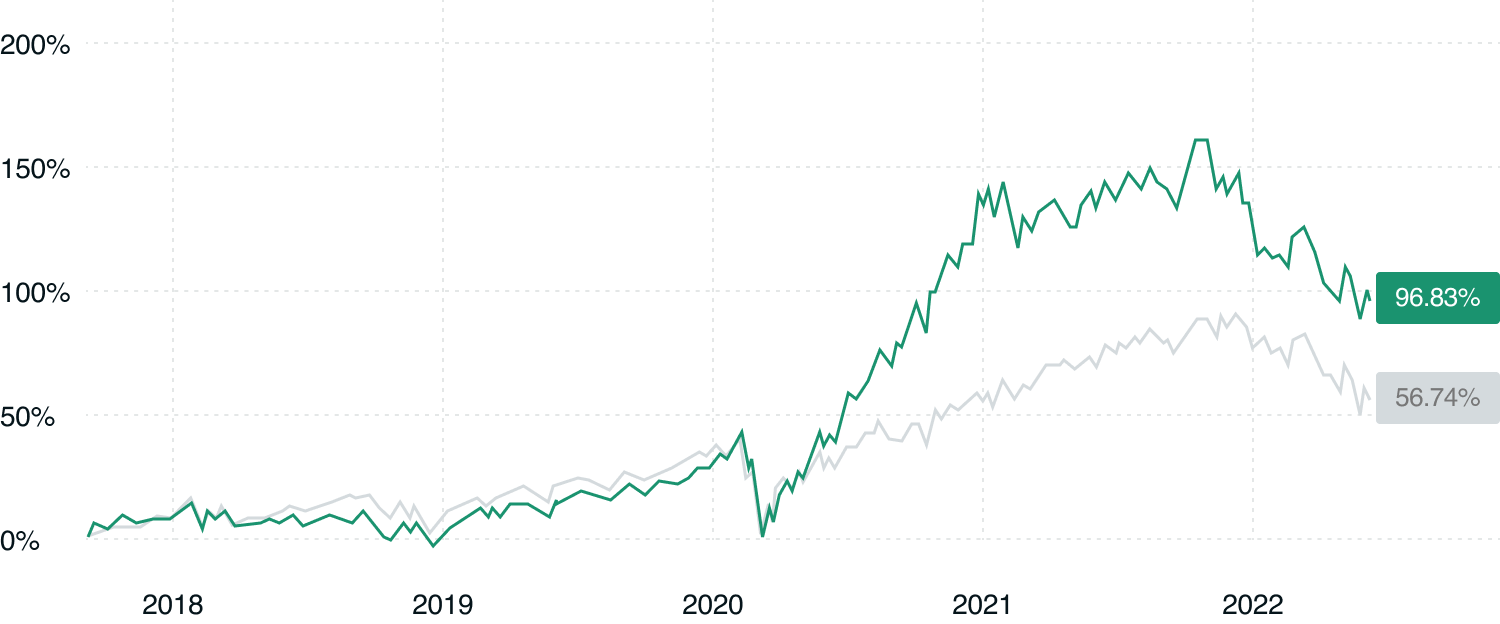

Disclosures
This data compares the selected Carbon Collective portfolio to the comparable blended US benchmark. For example, a 90% stock, 10% bond CC portfolio is compared to the 90/10 US stock/bond benchmark. Carbon Collective’s results include fees (0.25% annually) and assume reinvested dividends. The benchmark reflects a blend of the VTI and BND ETFs and therefore includes the actual expenses of those ETFs during the time period. Performance of all Carbon Collective portfolios from 01/01/2015 - 10/18/20 are backtested, rebalancing on the first day of each year as if our climate-forward strategy had been launched in 2015. See the full details of how we simulate historical performance. Performance of Carbon Collective portfolios after 10/18/20 are simulated performance net of Carbon Collective’s fees and expenses of any underlying ETF included in the portfolios.
Simulated performance, nor past performance are a guarantee of future returns. Investments involve risks and there is always the potential of losing money when you invest in securities.
Total return:
Carbon Collective: 57.82%
Index: 35.95%
Jun 30, 2017 - Jun 30, 2022
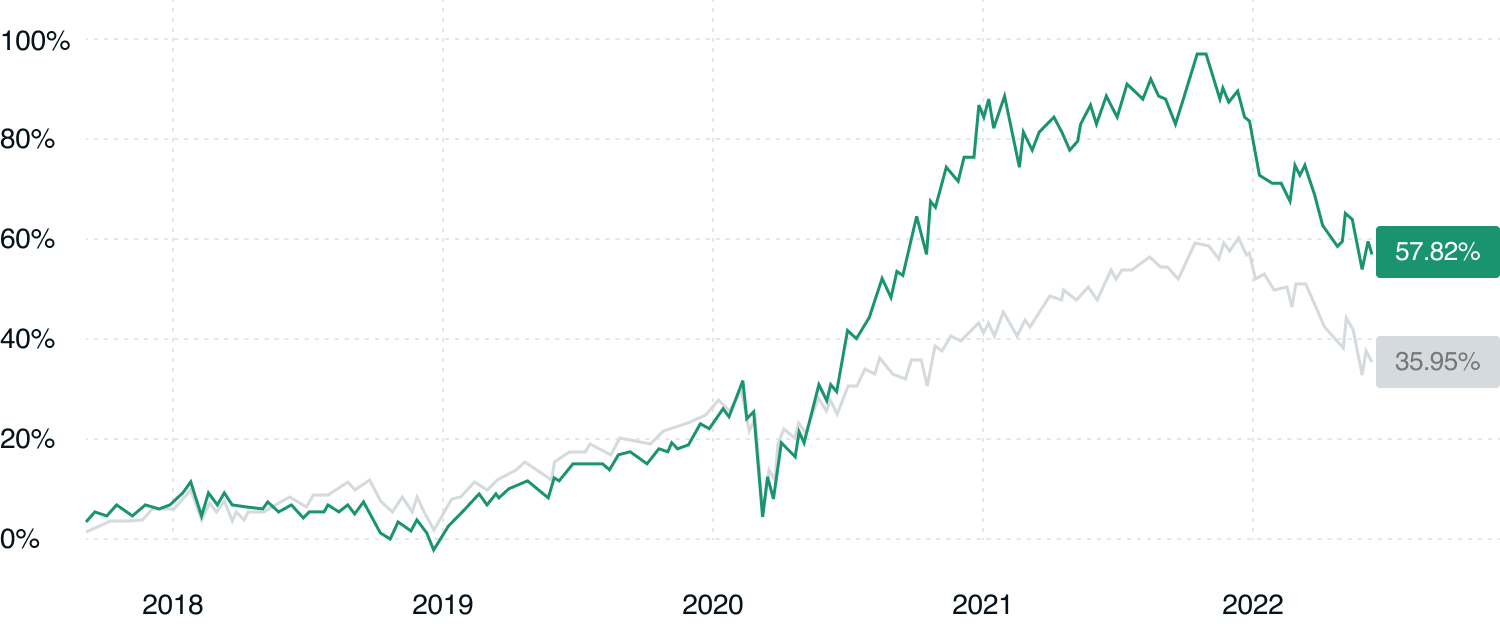

Disclosures
This data compares the selected Carbon Collective portfolio to the comparable blended US benchmark. For example, a 90% stock, 10% bond CC portfolio is compared to the 90/10 US stock/bond benchmark. Carbon Collective’s results include fees (0.25% annually) and assume reinvested dividends. The benchmark reflects a blend of the VTI and BND ETFs and therefore includes the actual expenses of those ETFs during the time period. Performance of all Carbon Collective portfolios from 01/01/2015 - 10/18/20 are backtested, rebalancing on the first day of each year as if our climate-forward strategy had been launched in 2015. See the full details of how we simulate historical performance. Performance of Carbon Collective portfolios after 10/18/20 are simulated performance net of Carbon Collective’s fees and expenses of any underlying ETF included in the portfolios.
Simulated performance, nor past performance are a guarantee of future returns. Investments involve risks and there is always the potential of losing money when you invest in securities.
Total return:
Carbon Collective: 83.93%
Index: 49.69%
Jun 30, 2017 - Jun 30, 2022
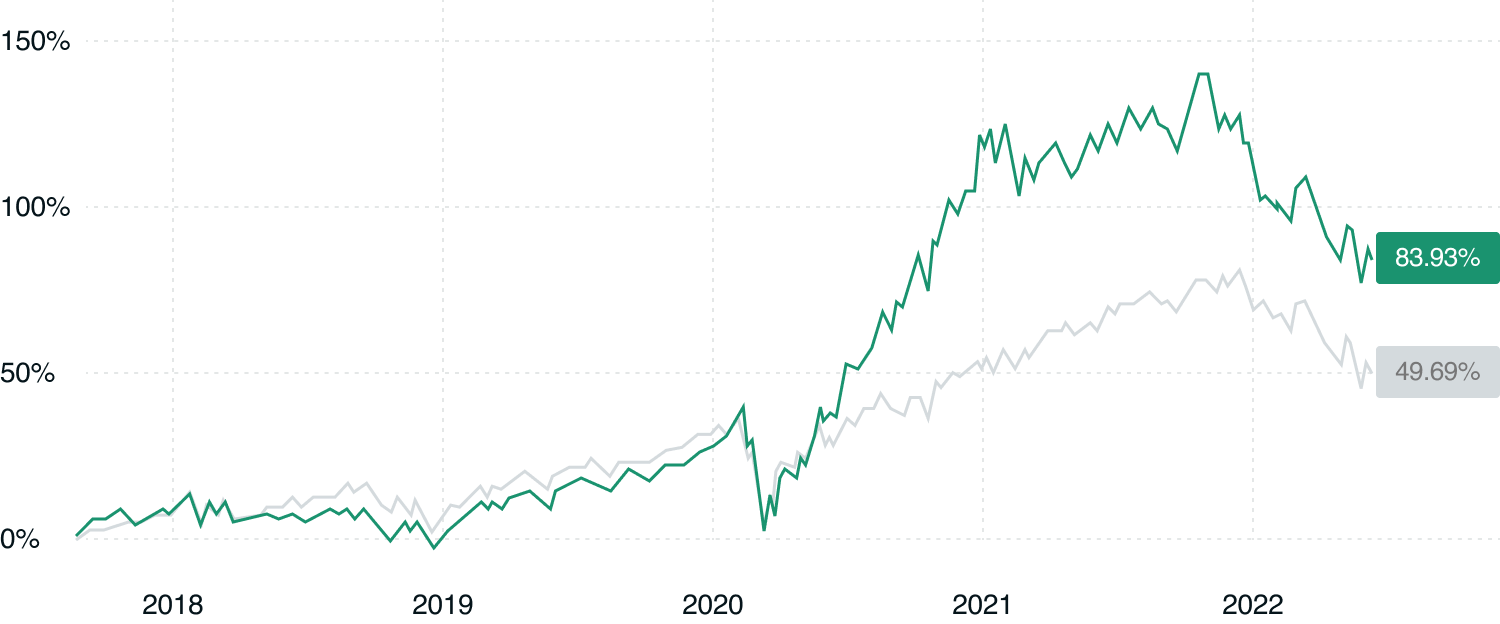

Disclosures
This data compares the selected Carbon Collective portfolio to the comparable blended US benchmark. For example, a 90% stock, 10% bond CC portfolio is compared to the 90/10 US stock/bond benchmark. Carbon Collective’s results include fees (0.25% annually) and assume reinvested dividends. The benchmark reflects a blend of the VTI and BND ETFs and therefore includes the actual expenses of those ETFs during the time period. Performance of all Carbon Collective portfolios from 01/01/2015 - 10/18/20 are backtested, rebalancing on the first day of each year as if our climate-forward strategy had been launched in 2015. See the full details of how we simulate historical performance. Performance of Carbon Collective portfolios after 10/18/20 are simulated performance net of Carbon Collective’s fees and expenses of any underlying ETF included in the portfolios.
Simulated performance, nor past performance are a guarantee of future returns. Investments involve risks and there is always the potential of losing money when you invest in securities.
Total return:
Carbon Collective: 70.15%
Index: 42.76%
Jun 30, 2017 - Jun 30, 2022
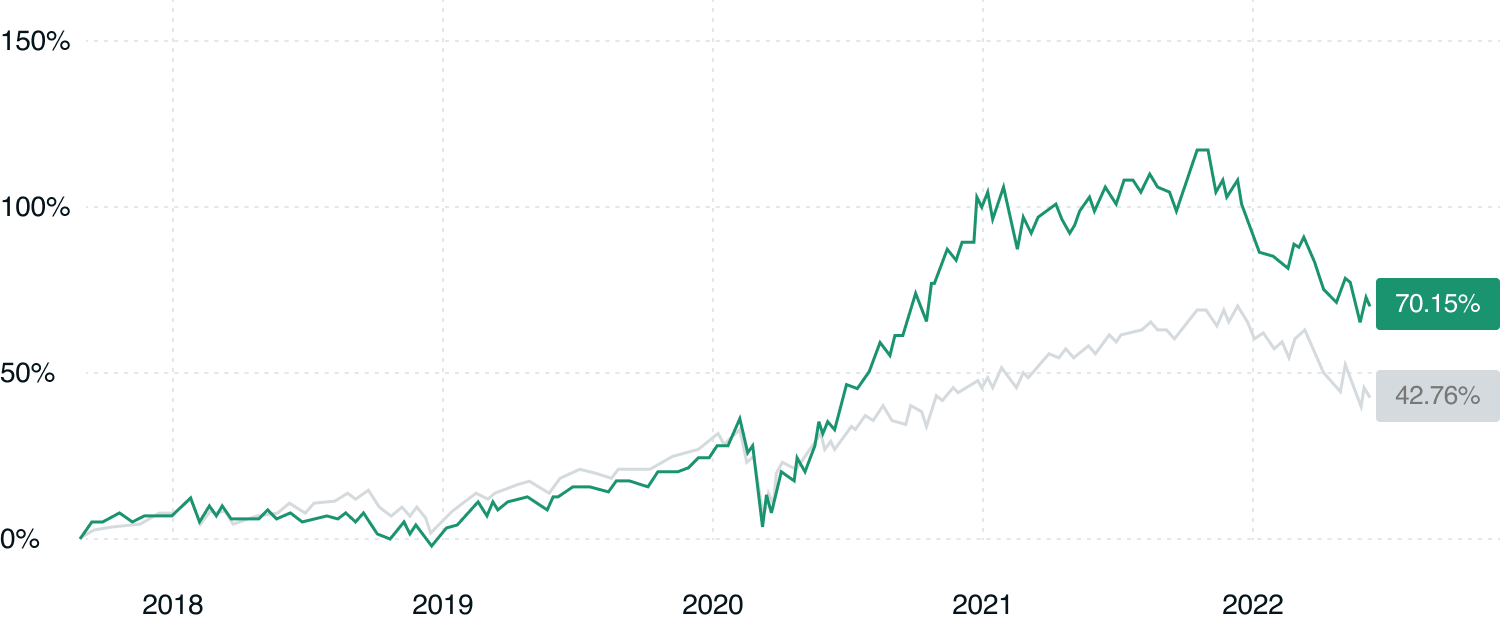

Disclosures
This data compares the selected Carbon Collective portfolio to the comparable blended US benchmark. For example, a 90% stock, 10% bond CC portfolio is compared to the 90/10 US stock/bond benchmark. Carbon Collective’s results include fees (0.25% annually) and assume reinvested dividends. The benchmark reflects a blend of the VTI and BND ETFs and therefore includes the actual expenses of those ETFs during the time period. Performance of all Carbon Collective portfolios from 01/01/2015 - 10/18/20 are backtested, rebalancing on the first day of each year as if our climate-forward strategy had been launched in 2015. See the full details of how we simulate historical performance. Performance of Carbon Collective portfolios after 10/18/20 are simulated performance net of Carbon Collective’s fees and expenses of any underlying ETF included in the portfolios.
Simulated performance, nor past performance are a guarantee of future returns. Investments involve risks and there is always the potential of losing money when you invest in securities.
Total return:
Carbon Collective: 44.86%
Index: 29.29%
Jun 30, 2017 - Jun 30, 2022
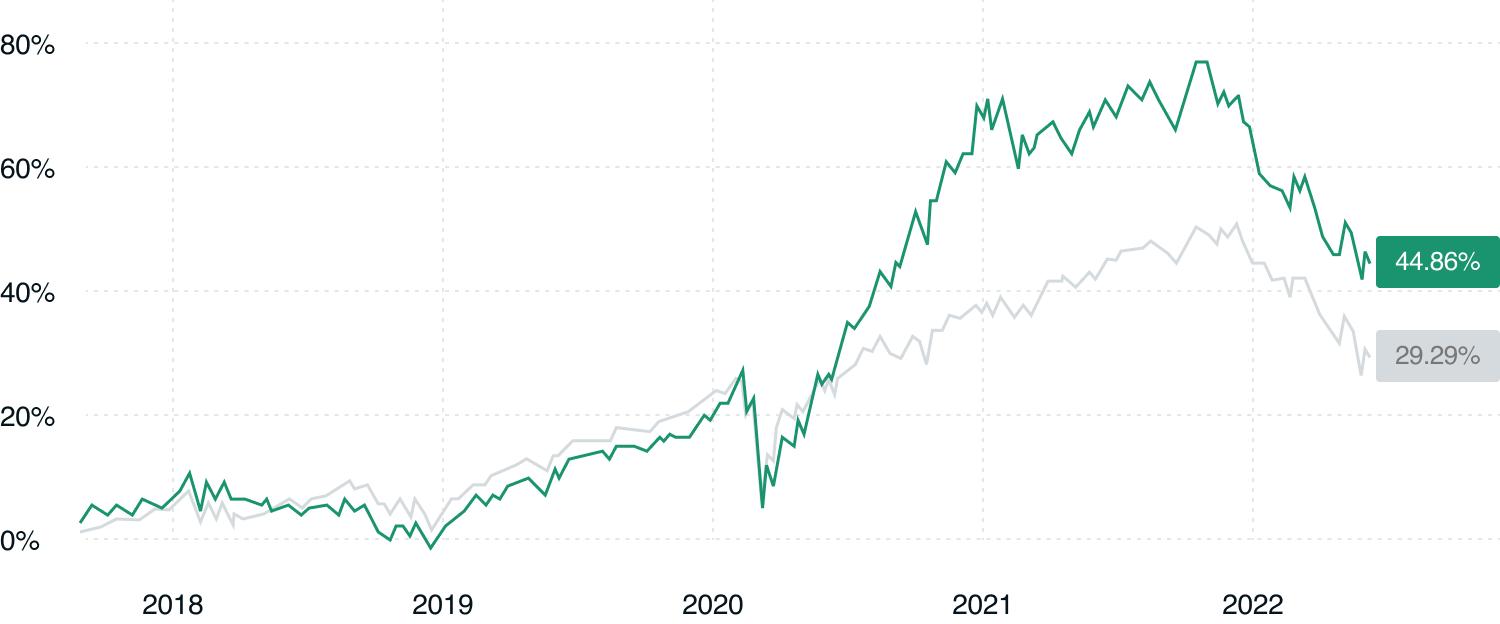

Disclosures
This data compares the selected Carbon Collective portfolio to the comparable blended US benchmark. For example, a 90% stock, 10% bond CC portfolio is compared to the 90/10 US stock/bond benchmark. Carbon Collective’s results include fees (0.25% annually) and assume reinvested dividends. The benchmark reflects a blend of the VTI and BND ETFs and therefore includes the actual expenses of those ETFs during the time period. Performance of all Carbon Collective portfolios from 01/01/2015 - 10/18/20 are backtested, rebalancing on the first day of each year as if our climate-forward strategy had been launched in 2015. See the full details of how we simulate historical performance. Performance of Carbon Collective portfolios after 10/18/20 are simulated performance net of Carbon Collective’s fees and expenses of any underlying ETF included in the portfolios.
Simulated performance, nor past performance are a guarantee of future returns. Investments involve risks and there is always the potential of losing money when you invest in securities.
Total return:
Carbon Collective: 109.57%
Index: 63.89%
Jun 30, 2017 - Jun 30, 2022
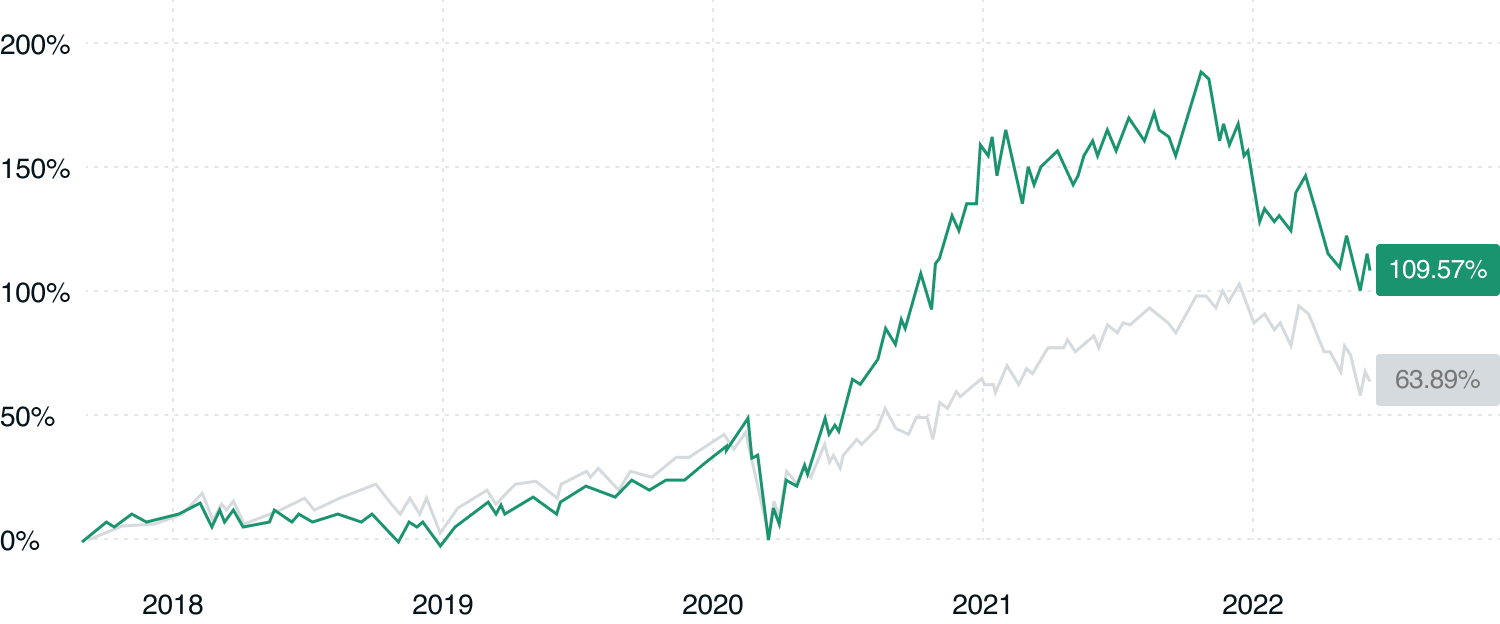

Disclosures
This data compares the selected Carbon Collective portfolio to the comparable blended US benchmark. For example, a 90% stock, 10% bond CC portfolio is compared to the 90/10 US stock/bond benchmark. Carbon Collective’s results include fees (0.25% annually) and assume reinvested dividends. The benchmark reflects a blend of the VTI and BND ETFs and therefore includes the actual expenses of those ETFs during the time period. Performance of all Carbon Collective portfolios from 01/01/2015 - 10/18/20 are backtested, rebalancing on the first day of each year as if our climate-forward strategy had been launched in 2015. See the full details of how we simulate historical performance. Performance of Carbon Collective portfolios after 10/18/20 are simulated performance net of Carbon Collective’s fees and expenses of any underlying ETF included in the portfolios.
Simulated performance, nor past performance are a guarantee of future returns. Investments involve risks and there is always the potential of losing money when you invest in securities.
Jun 30, 2017 - Jun 30, 2022
BENCHMARK
Annual Return
14.49%
9.39%
Risk (STD)
17.70%
13.80%
Max Drawdown
-29.90%
-27.80%
Recovery (Days)
77
134
Beta
0.88
0.81
Alpha
4.34%
-0.14%
Current Yield
1.48%
-

Disclosures
This data compares the selected Carbon Collective portfolio to the comparable blended US benchmark. For example, a 90% stock, 10% bond CC portfolio is compared to the 90/10 US stock/bond benchmark. Carbon Collective’s results include fees (0.25% annually) and assume reinvested dividends. The benchmark reflects a blend of the VTI and BND ETFs and therefore includes the actual expenses of those ETFs during the time period. Performance of all Carbon Collective portfolios from 01/01/2015 - 10/18/20 are backtested, rebalancing on the first day of each year as if our climate-forward strategy had been launched in 2015. See the full details of how we simulate historical performance. Performance of Carbon Collective portfolios after 10/18/20 are simulated performance net of Carbon Collective’s fees and expenses of any underlying ETF included in the portfolios.
Simulated performance, nor past performance are a guarantee of future returns. Investments involve risks and there is always the potential of losing money when you invest in securities.
Jun 30, 2017 - Jun 30, 2022
BENCHMARK
Annual Return
9.54%
6.33%
Beta
0.6
0.53
Alpha
2.19%
-0.34%
Max Drawdown
-22.40%
-18.30%
Current Yield
1.69%
-
Risk (STD)
12.20%
9.10%
Recovery (Days)
-
77

Disclosures
This data compares the selected Carbon Collective portfolio to the comparable blended US benchmark. For example, a 90% stock, 10% bond CC portfolio is compared to the 90/10 US stock/bond benchmark. Carbon Collective’s results include fees (0.25% annually) and assume reinvested dividends. The benchmark reflects a blend of the VTI and BND ETFs and therefore includes the actual expenses of those ETFs during the time period. Performance of all Carbon Collective portfolios from 01/01/2015 - 10/18/20 are backtested, rebalancing on the first day of each year as if our climate-forward strategy had been launched in 2015. See the full details of how we simulate historical performance. Performance of Carbon Collective portfolios after 10/18/20 are simulated performance net of Carbon Collective’s fees and expenses of any underlying ETF included in the portfolios.
Simulated performance, nor past performance are a guarantee of future returns. Investments involve risks and there is always the potential of losing money when you invest in securities.
Jun 30, 2017 - Jun 30, 2022
BENCHMARK
Annual Return
12.95%
8.39%
Risk (STD)
15.80%
12.20%
Alpha
3.71%
-0.21%
Max Drawdown
-26.90%
-24.70%
Beta
0.78
0.72
Recovery (Days)
77
121
Current Yield
1.55%
-

Disclosures
This data compares the selected Carbon Collective portfolio to the comparable blended US benchmark. For example, a 90% stock, 10% bond CC portfolio is compared to the 90/10 US stock/bond benchmark. Carbon Collective’s results include fees (0.25% annually) and assume reinvested dividends. The benchmark reflects a blend of the VTI and BND ETFs and therefore includes the actual expenses of those ETFs during the time period. Performance of all Carbon Collective portfolios from 01/01/2015 - 10/18/20 are backtested, rebalancing on the first day of each year as if our climate-forward strategy had been launched in 2015. See the full details of how we simulate historical performance. Performance of Carbon Collective portfolios after 10/18/20 are simulated performance net of Carbon Collective’s fees and expenses of any underlying ETF included in the portfolios.
Simulated performance, nor past performance are a guarantee of future returns. Investments involve risks and there is always the potential of losing money when you invest in securities.
Jun 30, 2017 - Jun 30, 2022
BENCHMARK
Risk (STD)
14.00%
10.60%
Beta
0.69
0.62
Max Drawdown
-24.40%
-21.50%
Recovery (Days)
-
119
Annual Return
11.20%
7.37%
Alpha
2.90%
-0.28%
Current Yield
1.62%
-

Disclosures
This data compares the selected Carbon Collective portfolio to the comparable blended US benchmark. For example, a 90% stock, 10% bond CC portfolio is compared to the 90/10 US stock/bond benchmark. Carbon Collective’s results include fees (0.25% annually) and assume reinvested dividends. The benchmark reflects a blend of the VTI and BND ETFs and therefore includes the actual expenses of those ETFs during the time period. Performance of all Carbon Collective portfolios from 01/01/2015 - 10/18/20 are backtested, rebalancing on the first day of each year as if our climate-forward strategy had been launched in 2015. See the full details of how we simulate historical performance. Performance of Carbon Collective portfolios after 10/18/20 are simulated performance net of Carbon Collective’s fees and expenses of any underlying ETF included in the portfolios.
Simulated performance, nor past performance are a guarantee of future returns. Investments involve risks and there is always the potential of losing money when you invest in securities.
Jun 30, 2017 - Jun 30, 2022
BENCHMARK
Annual Return
7.68%
5.27%
Alpha
1.36%
-0.41%
Max Drawdown
-20.30%
-16.10%
Recovery (Days)
-
-
Risk (STD)
10.30%
7.70%
Beta
0.5
0.43
Current Yield
1.74%
-

Disclosures
This data compares the selected Carbon Collective portfolio to the comparable blended US benchmark. For example, a 90% stock, 10% bond CC portfolio is compared to the 90/10 US stock/bond benchmark. Carbon Collective’s results include fees (0.25% annually) and assume reinvested dividends. The benchmark reflects a blend of the VTI and BND ETFs and therefore includes the actual expenses of those ETFs during the time period. Performance of all Carbon Collective portfolios from 01/01/2015 - 10/18/20 are backtested, rebalancing on the first day of each year as if our climate-forward strategy had been launched in 2015. See the full details of how we simulate historical performance. Performance of Carbon Collective portfolios after 10/18/20 are simulated performance net of Carbon Collective’s fees and expenses of any underlying ETF included in the portfolios.
Simulated performance, nor past performance are a guarantee of future returns. Investments involve risks and there is always the potential of losing money when you invest in securities.
Jun 30, 2017 - Jun 30, 2022
BENCHMARK
Annual Return
15.93%
10.37%
Risk (STD)
19.70%
15.30%
Alpha
4.87%
-0.07%
Max Drawdown
-32.90%
-30.80%
Recovery (Days)
77
136
Current Yield
1.40%
-
Beta
0.98
0.91

Disclosures
This data compares the selected Carbon Collective portfolio to the comparable blended US benchmark. For example, a 90% stock, 10% bond CC portfolio is compared to the 90/10 US stock/bond benchmark. Carbon Collective’s results include fees (0.25% annually) and assume reinvested dividends. The benchmark reflects a blend of the VTI and BND ETFs and therefore includes the actual expenses of those ETFs during the time period. Performance of all Carbon Collective portfolios from 01/01/2015 - 10/18/20 are backtested, rebalancing on the first day of each year as if our climate-forward strategy had been launched in 2015. See the full details of how we simulate historical performance. Performance of Carbon Collective portfolios after 10/18/20 are simulated performance net of Carbon Collective’s fees and expenses of any underlying ETF included in the portfolios.
Simulated performance, nor past performance are a guarantee of future returns. Investments involve risks and there is always the potential of losing money when you invest in securities.
Portfolio type:
Just the climate index & green bonds
Just the climate index & green bonds
Just the climate index & green bonds
Just the climate index & green bonds
Just the climate index & green bonds
Just the climate index & green bonds
Select portfolio:
- Bold (80/20)
- Cautious (50/50)
- Moderately Bold (70/30)
- Moderately Cautious (60/40)
- Most Cautious (40/60)
- Most bold (90/10)
80% stocks, 18% bonds, 2% cash
50% stocks, 48% bonds, 2% cash
70% stocks, 28% bonds, 2% cash
60% stocks, 38% bonds, 2% cash
40% stocks, 58% bonds, 2% cash
90% stocks, 8% bonds, 2% cash
Total return:
Carbon Collective: 96.83%
Index: 56.74%
Jun 30, 2017 - Jun 30, 2022
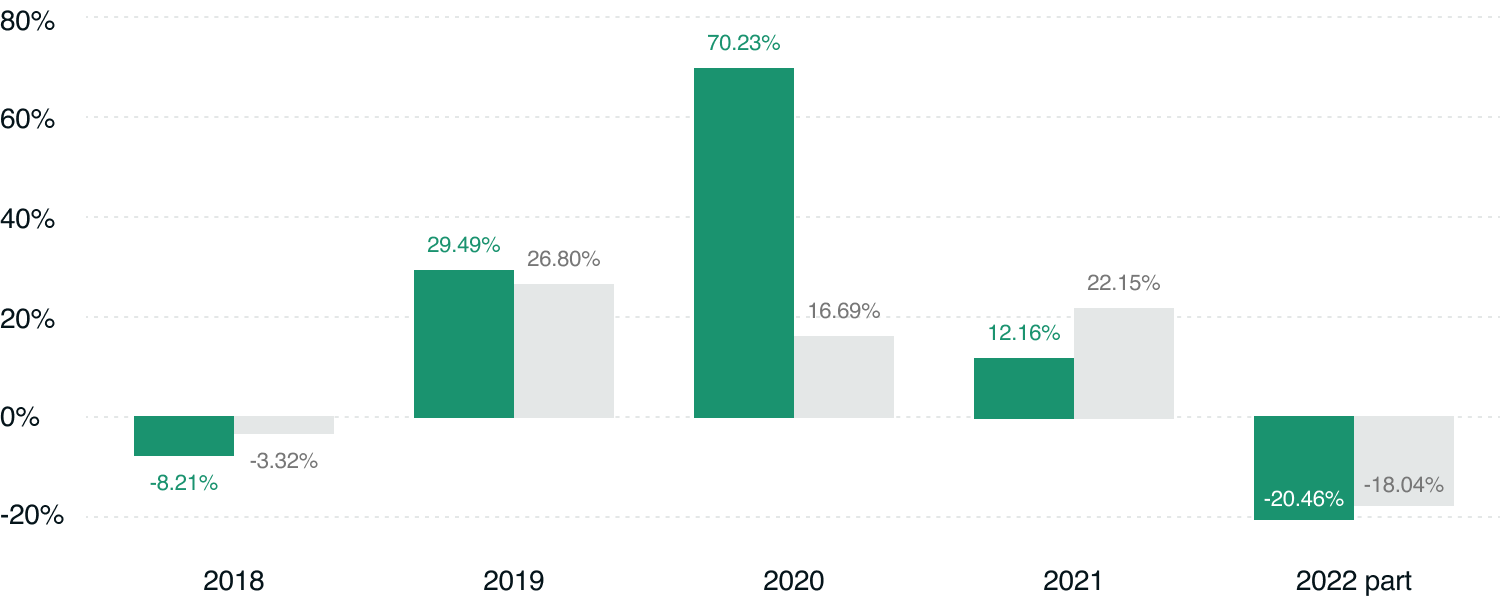

Disclosures
This data compares the selected Carbon Collective portfolio to the comparable blended US benchmark. For example, a 90% stock, 10% bond CC portfolio is compared to the 90/10 US stock/bond benchmark. Carbon Collective’s results include fees (0.25% annually) and assume reinvested dividends. The benchmark reflects a blend of the VTI and BND ETFs and therefore includes the actual expenses of those ETFs during the time period. Performance of all Carbon Collective portfolios from 01/01/2015 - 10/18/20 are backtested, rebalancing on the first day of each year as if our climate-forward strategy had been launched in 2015. See the full details of how we simulate historical performance. Performance of Carbon Collective portfolios after 10/18/20 are simulated performance net of Carbon Collective’s fees and expenses of any underlying ETF included in the portfolios.
Simulated performance, nor past performance are a guarantee of future returns. Investments involve risks and there is always the potential of losing money when you invest in securities.
Total return:
Carbon Collective: 57.82%
Index: 35.95%
Jun 30, 2017 - Jun 30, 2022
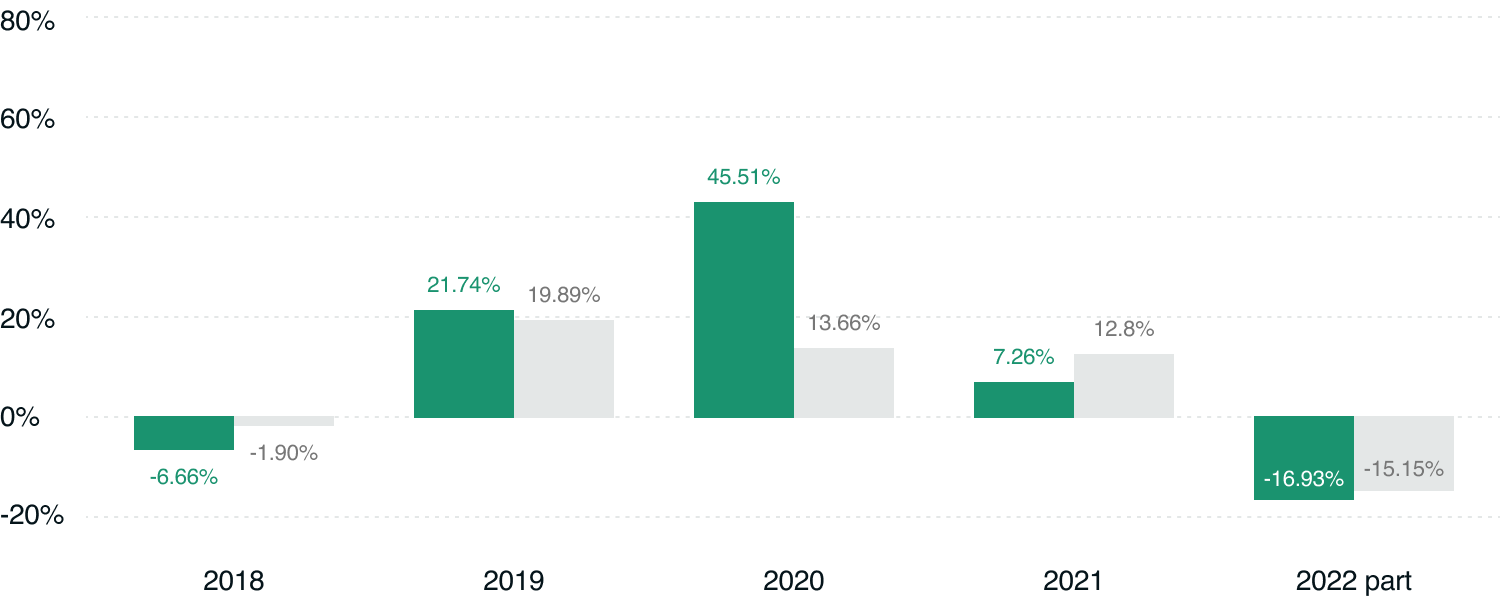

Disclosures
This data compares the selected Carbon Collective portfolio to the comparable blended US benchmark. For example, a 90% stock, 10% bond CC portfolio is compared to the 90/10 US stock/bond benchmark. Carbon Collective’s results include fees (0.25% annually) and assume reinvested dividends. The benchmark reflects a blend of the VTI and BND ETFs and therefore includes the actual expenses of those ETFs during the time period. Performance of all Carbon Collective portfolios from 01/01/2015 - 10/18/20 are backtested, rebalancing on the first day of each year as if our climate-forward strategy had been launched in 2015. See the full details of how we simulate historical performance. Performance of Carbon Collective portfolios after 10/18/20 are simulated performance net of Carbon Collective’s fees and expenses of any underlying ETF included in the portfolios.
Simulated performance, nor past performance are a guarantee of future returns. Investments involve risks and there is always the potential of losing money when you invest in securities.
Total return:
Carbon Collective: 83.93%
Index: 49.69%
Jun 30, 2017 - Jun 30, 2022
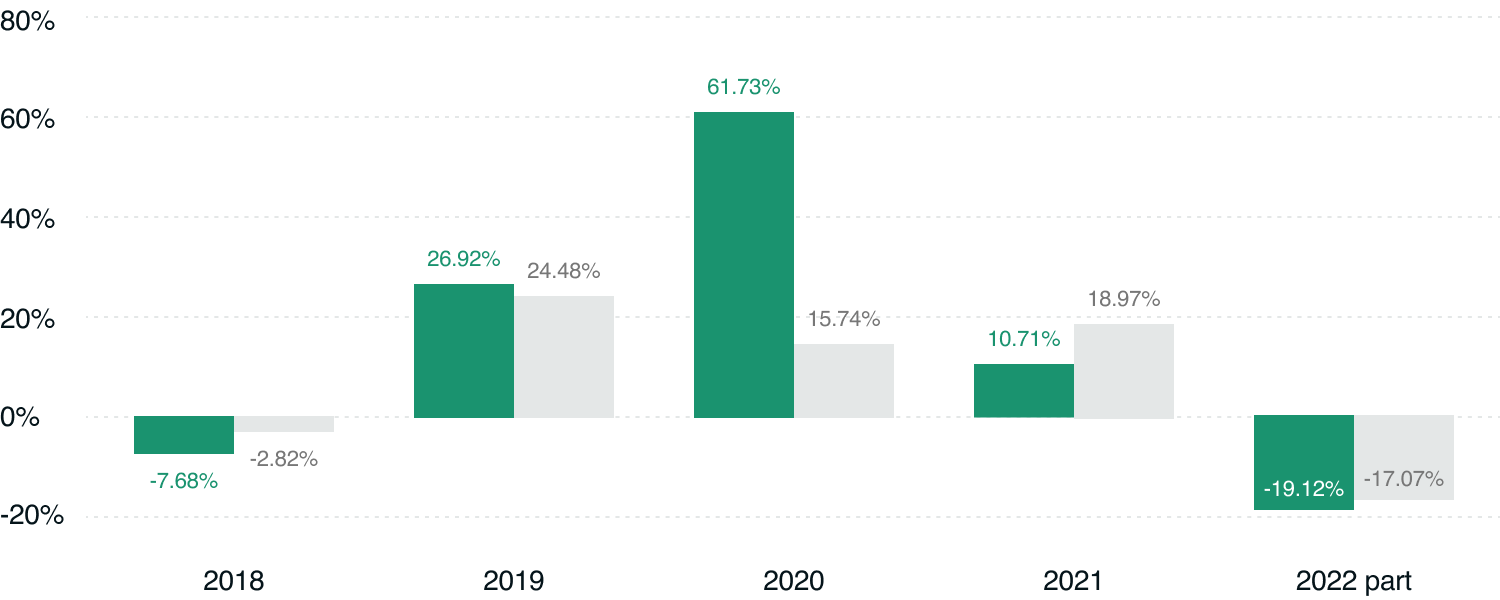

Disclosures
This data compares the selected Carbon Collective portfolio to the comparable blended US benchmark. For example, a 90% stock, 10% bond CC portfolio is compared to the 90/10 US stock/bond benchmark. Carbon Collective’s results include fees (0.25% annually) and assume reinvested dividends. The benchmark reflects a blend of the VTI and BND ETFs and therefore includes the actual expenses of those ETFs during the time period. Performance of all Carbon Collective portfolios from 01/01/2015 - 10/18/20 are backtested, rebalancing on the first day of each year as if our climate-forward strategy had been launched in 2015. See the full details of how we simulate historical performance. Performance of Carbon Collective portfolios after 10/18/20 are simulated performance net of Carbon Collective’s fees and expenses of any underlying ETF included in the portfolios.
Simulated performance, nor past performance are a guarantee of future returns. Investments involve risks and there is always the potential of losing money when you invest in securities.
Total return:
Carbon Collective: 70.15%
Index: 42.76%
Jun 30, 2017 - Jun 30, 2022
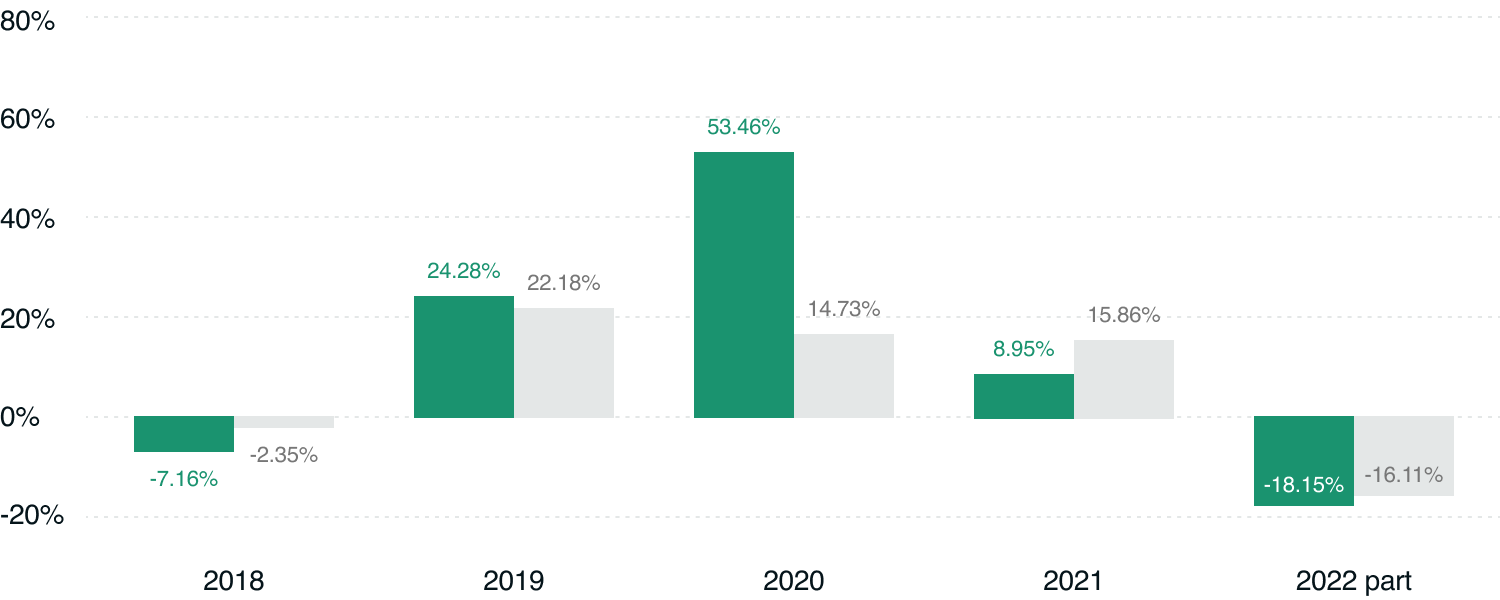

Disclosures
This data compares the selected Carbon Collective portfolio to the comparable blended US benchmark. For example, a 90% stock, 10% bond CC portfolio is compared to the 90/10 US stock/bond benchmark. Carbon Collective’s results include fees (0.25% annually) and assume reinvested dividends. The benchmark reflects a blend of the VTI and BND ETFs and therefore includes the actual expenses of those ETFs during the time period. Performance of all Carbon Collective portfolios from 01/01/2015 - 10/18/20 are backtested, rebalancing on the first day of each year as if our climate-forward strategy had been launched in 2015. See the full details of how we simulate historical performance. Performance of Carbon Collective portfolios after 10/18/20 are simulated performance net of Carbon Collective’s fees and expenses of any underlying ETF included in the portfolios.
Simulated performance, nor past performance are a guarantee of future returns. Investments involve risks and there is always the potential of losing money when you invest in securities.
Total return:
Carbon Collective: 44.86%
Index: 29.29%
Jun 30, 2017 - Jun 30, 2022
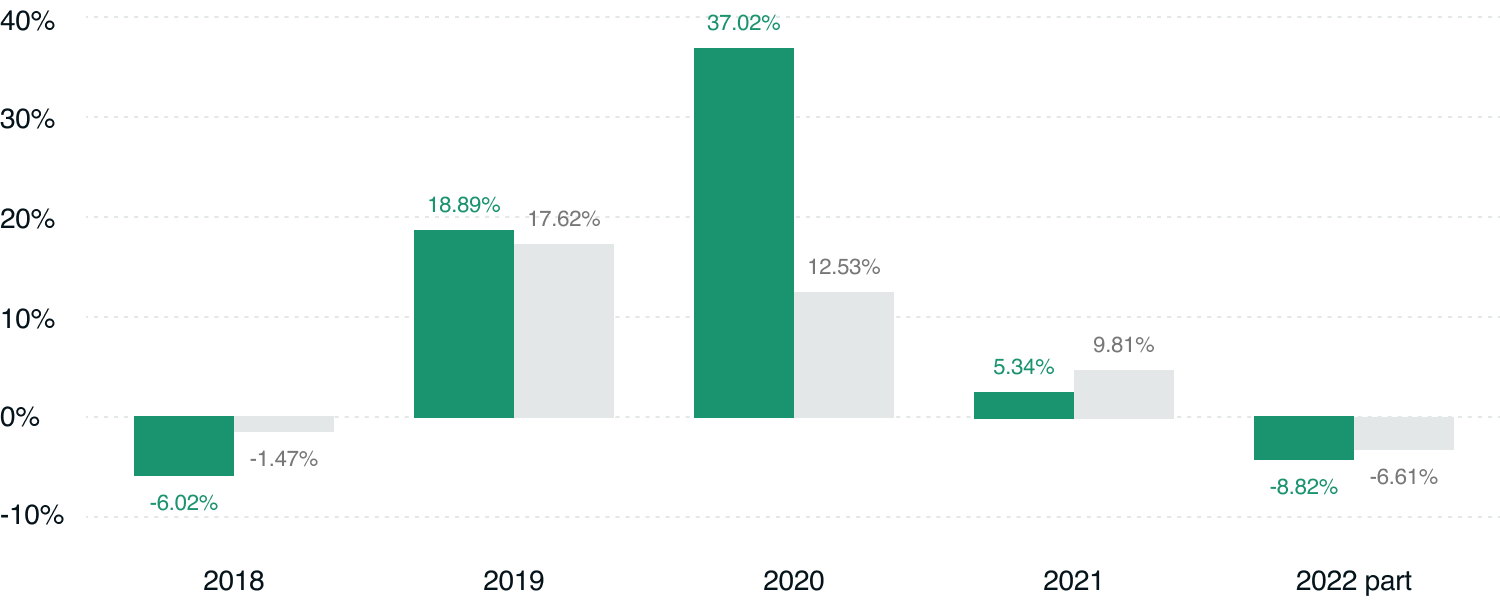

Disclosures
This data compares the selected Carbon Collective portfolio to the comparable blended US benchmark. For example, a 90% stock, 10% bond CC portfolio is compared to the 90/10 US stock/bond benchmark. Carbon Collective’s results include fees (0.25% annually) and assume reinvested dividends. The benchmark reflects a blend of the VTI and BND ETFs and therefore includes the actual expenses of those ETFs during the time period. Performance of all Carbon Collective portfolios from 01/01/2015 - 10/18/20 are backtested, rebalancing on the first day of each year as if our climate-forward strategy had been launched in 2015. See the full details of how we simulate historical performance. Performance of Carbon Collective portfolios after 10/18/20 are simulated performance net of Carbon Collective’s fees and expenses of any underlying ETF included in the portfolios.
Simulated performance, nor past performance are a guarantee of future returns. Investments involve risks and there is always the potential of losing money when you invest in securities.
Total return:
Carbon Collective: 109.57%
Index: 63.89%
Jun 30, 2017 - Jun 30, 2022
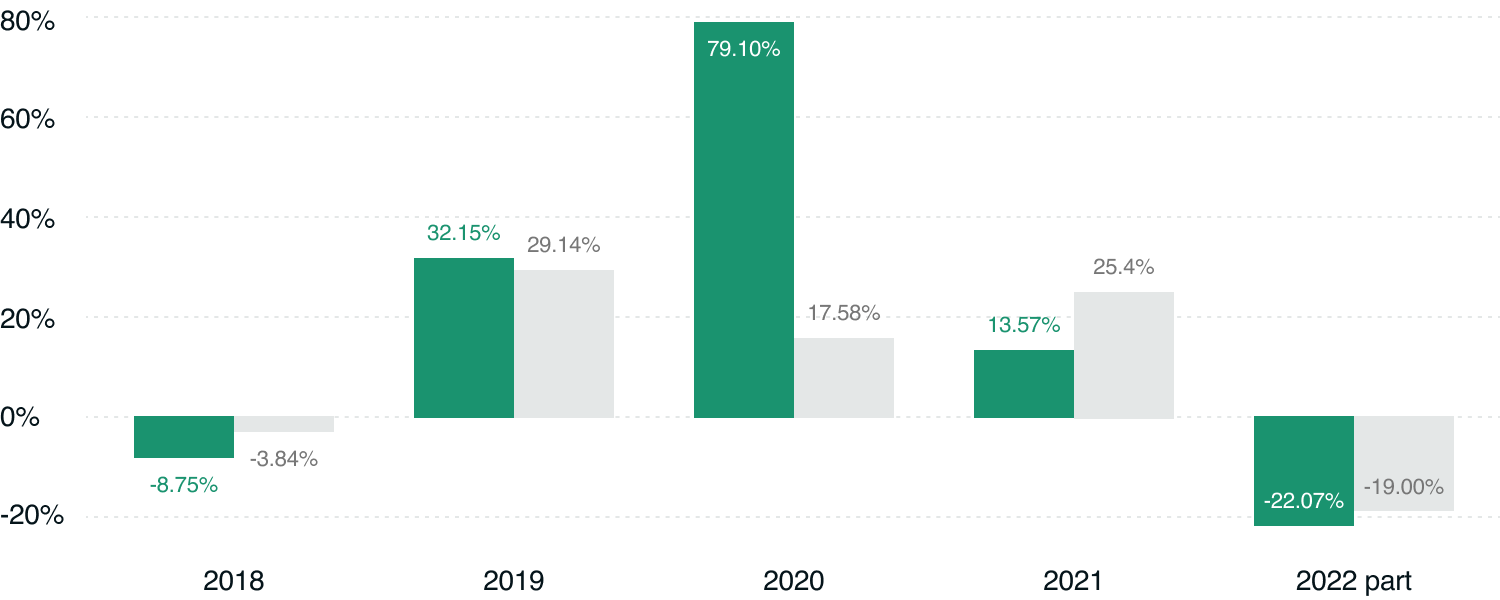

Disclosures
This data compares the selected Carbon Collective portfolio to the comparable blended US benchmark. For example, a 90% stock, 10% bond CC portfolio is compared to the 90/10 US stock/bond benchmark. Carbon Collective’s results include fees (0.25% annually) and assume reinvested dividends. The benchmark reflects a blend of the VTI and BND ETFs and therefore includes the actual expenses of those ETFs during the time period. Performance of all Carbon Collective portfolios from 01/01/2015 - 10/18/20 are backtested, rebalancing on the first day of each year as if our climate-forward strategy had been launched in 2015. See the full details of how we simulate historical performance. Performance of Carbon Collective portfolios after 10/18/20 are simulated performance net of Carbon Collective’s fees and expenses of any underlying ETF included in the portfolios.
Simulated performance, nor past performance are a guarantee of future returns. Investments involve risks and there is always the potential of losing money when you invest in securities.
Jun 30, 2017 - Jun 30, 2022
BENCHMARK
Risk (STD)
17.70%
13.80%
Max Drawdown
-29.90%
-27.80%
Recovery (Days)
77
134
Current Yield
1.48%
-
Annual Return
14.49%
9.39%
Beta
0.88
0.81
Alpha
4.34%
-0.14%

Disclosures
This data compares the selected Carbon Collective portfolio to the comparable blended US benchmark. For example, a 90% stock, 10% bond CC portfolio is compared to the 90/10 US stock/bond benchmark. Carbon Collective’s results include fees (0.25% annually) and assume reinvested dividends. The benchmark reflects a blend of the VTI and BND ETFs and therefore includes the actual expenses of those ETFs during the time period. Performance of all Carbon Collective portfolios from 01/01/2015 - 10/18/20 are backtested, rebalancing on the first day of each year as if our climate-forward strategy had been launched in 2015. See the full details of how we simulate historical performance. Performance of Carbon Collective portfolios after 10/18/20 are simulated performance net of Carbon Collective’s fees and expenses of any underlying ETF included in the portfolios.
Simulated performance, nor past performance are a guarantee of future returns. Investments involve risks and there is always the potential of losing money when you invest in securities.
Jun 30, 2017 - Jun 30, 2022
BENCHMARK
Beta
0.6
0.53
Alpha
2.19%
-0.34%
Max Drawdown
-22.40%
-18.30%
Current Yield
1.69%
-
Annual Return
9.54%
6.33%
Risk (STD)
12.20%
9.10%
Recovery (Days)
-
77

Disclosures
This data compares the selected Carbon Collective portfolio to the comparable blended US benchmark. For example, a 90% stock, 10% bond CC portfolio is compared to the 90/10 US stock/bond benchmark. Carbon Collective’s results include fees (0.25% annually) and assume reinvested dividends. The benchmark reflects a blend of the VTI and BND ETFs and therefore includes the actual expenses of those ETFs during the time period. Performance of all Carbon Collective portfolios from 01/01/2015 - 10/18/20 are backtested, rebalancing on the first day of each year as if our climate-forward strategy had been launched in 2015. See the full details of how we simulate historical performance. Performance of Carbon Collective portfolios after 10/18/20 are simulated performance net of Carbon Collective’s fees and expenses of any underlying ETF included in the portfolios.
Simulated performance, nor past performance are a guarantee of future returns. Investments involve risks and there is always the potential of losing money when you invest in securities.
Jun 30, 2017 - Jun 30, 2022
BENCHMARK
Annual Return
12.95%
8.39%
Risk (STD)
15.80%
12.20%
Max Drawdown
-26.90%
-24.70%
Recovery (Days)
77
121
Current Yield
1.55%
-
Beta
0.78
0.72
Alpha
3.71%
-0.21%

Disclosures
This data compares the selected Carbon Collective portfolio to the comparable blended US benchmark. For example, a 90% stock, 10% bond CC portfolio is compared to the 90/10 US stock/bond benchmark. Carbon Collective’s results include fees (0.25% annually) and assume reinvested dividends. The benchmark reflects a blend of the VTI and BND ETFs and therefore includes the actual expenses of those ETFs during the time period. Performance of all Carbon Collective portfolios from 01/01/2015 - 10/18/20 are backtested, rebalancing on the first day of each year as if our climate-forward strategy had been launched in 2015. See the full details of how we simulate historical performance. Performance of Carbon Collective portfolios after 10/18/20 are simulated performance net of Carbon Collective’s fees and expenses of any underlying ETF included in the portfolios.
Simulated performance, nor past performance are a guarantee of future returns. Investments involve risks and there is always the potential of losing money when you invest in securities.
Jun 30, 2017 - Jun 30, 2022
BENCHMARK
Risk (STD)
14.00%
10.60%
Beta
0.69
0.62
Max Drawdown
-24.40%
-21.50%
Recovery (Days)
-
119
Annual Return
11.20%
7.37%
Alpha
2.90%
-0.28%
Current Yield
1.62%
-

Disclosures
This data compares the selected Carbon Collective portfolio to the comparable blended US benchmark. For example, a 90% stock, 10% bond CC portfolio is compared to the 90/10 US stock/bond benchmark. Carbon Collective’s results include fees (0.25% annually) and assume reinvested dividends. The benchmark reflects a blend of the VTI and BND ETFs and therefore includes the actual expenses of those ETFs during the time period. Performance of all Carbon Collective portfolios from 01/01/2015 - 10/18/20 are backtested, rebalancing on the first day of each year as if our climate-forward strategy had been launched in 2015. See the full details of how we simulate historical performance. Performance of Carbon Collective portfolios after 10/18/20 are simulated performance net of Carbon Collective’s fees and expenses of any underlying ETF included in the portfolios.
Simulated performance, nor past performance are a guarantee of future returns. Investments involve risks and there is always the potential of losing money when you invest in securities.
Jun 30, 2017 - Jun 30, 2022
BENCHMARK
Annual Return
7.68%
5.27%
Risk (STD)
10.30%
7.70%
Beta
0.5
0.43
Alpha
1.36%
-0.41%
Max Drawdown
-20.30%
-16.10%
Current Yield
1.74%
-
Recovery (Days)
-
-

Disclosures
This data compares the selected Carbon Collective portfolio to the comparable blended US benchmark. For example, a 90% stock, 10% bond CC portfolio is compared to the 90/10 US stock/bond benchmark. Carbon Collective’s results include fees (0.25% annually) and assume reinvested dividends. The benchmark reflects a blend of the VTI and BND ETFs and therefore includes the actual expenses of those ETFs during the time period. Performance of all Carbon Collective portfolios from 01/01/2015 - 10/18/20 are backtested, rebalancing on the first day of each year as if our climate-forward strategy had been launched in 2015. See the full details of how we simulate historical performance. Performance of Carbon Collective portfolios after 10/18/20 are simulated performance net of Carbon Collective’s fees and expenses of any underlying ETF included in the portfolios.
Simulated performance, nor past performance are a guarantee of future returns. Investments involve risks and there is always the potential of losing money when you invest in securities.
Jun 30, 2017 - Jun 30, 2022
BENCHMARK
Risk (STD)
19.70%
15.30%
Beta
0.98
0.91
Alpha
4.87%
-0.07%
Recovery (Days)
77
136
Current Yield
1.40%
-
Annual Return
15.93%
10.37%
Max Drawdown
-32.90%
-30.80%

Disclosures
This data compares the selected Carbon Collective portfolio to the comparable blended US benchmark. For example, a 90% stock, 10% bond CC portfolio is compared to the 90/10 US stock/bond benchmark. Carbon Collective’s results include fees (0.25% annually) and assume reinvested dividends. The benchmark reflects a blend of the VTI and BND ETFs and therefore includes the actual expenses of those ETFs during the time period. Performance of all Carbon Collective portfolios from 01/01/2015 - 10/18/20 are backtested, rebalancing on the first day of each year as if our climate-forward strategy had been launched in 2015. See the full details of how we simulate historical performance. Performance of Carbon Collective portfolios after 10/18/20 are simulated performance net of Carbon Collective’s fees and expenses of any underlying ETF included in the portfolios.
Simulated performance, nor past performance are a guarantee of future returns. Investments involve risks and there is always the potential of losing money when you invest in securities.
Overview:
The Climate Index contains our filtered list of every company building solutions to climate change traded on US stock markets. This 2021-2022 update took over 1,500 hours of research, writing, and analysis to compile.
We began with an inclusionary ethical filter, finding every publicly traded company that is building a climate change solution listed in Project Drawdown or the IEA’s Net Zero 2050 Report. Next, we applied an exclusionary filter, removing the companies that make more revenue from sales to the fossil fuel industry than from their climate solution. We also removed companies who have been credibly accused of fraud. For some sectors, we passed companies through a set of stricter inclusion criteria, specifically: utilities, yieldcos, and waste management, biofuels, carbon capture, water distribution, LED, and reproductive health companies.
Finally, we passed the remaining companies through a simple financial filter. The remaining companies get weighted based upon their current market caps with a ceiling at 5% of the total index and a floor of 0.01%. We go through this process annually, and will be adding new companies that come onto the market and removing any who no longer meet our ethical criteria for inclusion in the 2nd half of 2022.
Jump to:
- Inclusionary filter: All companies building Drawdown solutions
- Exclusionary filter: Remove all companies who generate more revenue from the fossil fuel industry
- Refine: Specific criteria for utilities, waste management, and more
- Financial filter: Weight by market capitalization
- Annual update criteria
- Notable companies that were excluded
Step 1: Inclusionary filter.
Find every publicly traded company building a climate solution.
We build the Climate Index and include it in our portfolios because we believe sustainable impact investing must go further than just being “less bad” and reducing the harm. It also has to actively support and encourage the companies who are actively building solutions.
More companies every day are building the climate solutions found in Project Drawdown.
There is no single solution to climate change. From now until 2050, we must dramatically transform our global infrastructure to run without fossil fuels while preserving and protecting as many natural ecosystems as possible. Luckily, more and more companies are stepping up to build these critical solutions. The first part of building the Climate Index is to aggregate all of them that are trading on US public stock exchanges: large and small, pure-play and conglomerate.
It’s more than just solar and wind companies.
When people think of companies building climate solutions, the first thing that often comes to mind is renewable energy. That’s because we’re going to need to transition our entire global electrical system to running without emitting carbon dioxide. Most of this transition will need to happen from 2020 - 2030.
But to solve climate change and remain below 1.5ºC of global warming, humanity must implement far more solutions than just clean energy. We need our global fleet of buildings to be energy retrofitted, our electrical grid infrastructure to be significantly expanded and reinforced, our cars and trucks to run on electricity and green hydrogen, and much more. This is why we use comprehensive frameworks like those built by Project Drawdown and the International Energy Agency. They present clear paths on how we solve climate change.
Step 2: Exclusionary filter.
Of them, which companies also make products for the fossil fuel industry?
Just because a company is building a Drawdown solution does not mean that they are oriented towards solving climate change. In our second step of building the Climate Index, we dig into each company to analyze the extent to which they are supporting the transition to a zero-carbon world.
Separate out the “pure-play” companies.
First, we make it easy on ourselves by separating out the “pure-play” companies. If a company is just manufacturing solar panels or selling electric cars, we label them pure-play and include them in the index. After this is done, what remains are the companies who have multiple product lines and sources of revenue. For these, we dig further into the numbers.
Look closer at the companies who make products/services for many industries.
For these remaining companies, we dig into their financials to find the answers to the following questions:
- Do they sell products/services explicitly to the oil and gas industry?
- Do they sell products/services that depend on fossil fuels?
- If so, what % of their revenue do such activities generate?
- What % of revenue does the company make from its Drawdown solutions?
- Which is higher?
We only use the past year's revenue in this calculation. We do not take stock of any future projects around climate commitments as actions are far more powerful than words.
For some companies, their revenue reporting was not detailed enough to make a distinction between their fossil-fuel based revenue and that from their Drawdown solutions. These companies are excluded from the index, using the 'Lacks Proper Information' tag.
One note: Many companies sell a given product line to multiple industries and can include oil and gas. For example, an LED lighting manufacturer makes industrial lighting. Some of its customers own warehouses, some are from the fossil fuel industry. We generally do not count such industry agnostic products against a potential Climate Index company. Even fossil fuel companies are installing solar panels on their offices.
Exclude the companies who make more revenue from sales to the fossil fuel industry.
First, we make it easy on ourselves by separating out the “pure-play” companies. After gathering the above data and running our analysis, we exclude the companies that generate more revenue from directly servicing and/or building products that depend upon oil and gas. GE is a good example of a conglomerate we apply this filter to. They are one of the largest manufacturers of wind turbines in the world, so they pass our first filter. But they made more revenue from producing jet engines and natural gas turbines, so we excluded them from the 2022 Climate Index.
At this stage we also remove any companies who have been credibly accused of committing fraud. There are companies out there that are capitalizing on the global rush to build climate solutions. Those that have been caught making clearly fraudulent claims will also be removed at this stage.
Question: Why would companies that make anything for the fossil fuel industry be included at all? The world unfortunately still runs on fossil fuels. The process of Drawdown necessitates a transition away from them, which won’t happen overnight. We want to support the companies who are leading that transition while acknowledging that some of their customers may still be fossil fuel companies.
Step 3: Refine.
A number of sub-sectors need more specific criteria.
Some categories of companies are harder to classify and need more specific criteria. For each of these, we pass the companies through additional exclusionary filters specific to their industries.
Criteria for a “green utility” and yieldcos
There are dozens of investor-owned utilities traded on the New York stock exchange (such as Duke, NextEra, Dominion, Xcel, PG&E, etc.). While practically all of them have some form of carbon reduction/neutrality commitment, there is a broad range of historical investment in renewable energy and follow through on these commitments.
In order to be included in the Climate Index an investor-owned utility must:
- Generate (or purchase) more than 50% of its energy from carbon neutral sources (wind, solar, hydro, and nuclear).
- Have closure dates for any coal plant they own in the next three years.
- Assuming they are not yet carbon neutral (or very close to it), they must be investing in renewable energy at a rate that exceeds state and federal mandates. In other words, we want to invest in the utilities leading the parade towards carbon neutrality, not those merely being forced to.
- Have a clear track record of carbon reductions to make their claims of future reductions believable.
Given that Yieldcos operate similarly to utilities in that they make money from generating electricity, we process them through the “green utility” exclusionary filter, as well.
Criteria for waste management companies
There are three Drawdown solutions related to waste management: recycling, composting, and landfill methane capture. All of the publicly traded waste management companies collect materials for recycling. Municipalities, not waste management companies, decide to collect compost. Therefore, we opted to use the landfill methane capture as the deciding factor. In order to be included in the Climate Index, a waste management company must capture methane at over 50% of the landfills it operates.
Criteria for biofuel companies
Biofuels are combustible fuels that can be used in internal combustion or jet engines but are not derived from fossil fuels. Instead they are produced from fermenting biological matter. While burning them does release emissions, biofuels can emit far less, and more importantly, they can exist as part of the natural carbon cycle of annual uptake and release, instead of emitting previously sequestered carbon. Most biofuels though, are not necessarily better for climate, at least not yet. Most are ethanol based, which are often mixed with gasoline. The emissions reductions from these are fairly marginal.
Advanced biofuels, on the other hand, are made primarily of crop waste/and used cooking oils offer a complete drop in replacement for fossil fuels and can offer significant emissions reductions. For a biofuels company to be included in the Climate Index, advanced biofuels must make up more than 50% of its biofuel production.
Criteria for carbon capture & sequestration companies
For humanity to truly solve climate change it will need to capture historic atmospheric carbon emissions and secure them in some form. There are many methods of doing this, but one is to separate CO2 from the air and sequester it as a gas underground or in other secure places. Up and coming, non-public companies like Climeworks are working to scale such technologies for ambient air. There are a number of publicly traded companies that provide carbon capture services, but for a different industry: fossil fuels. Companies like Fuel Cell and Babcock & Wilcox generate a significant amount of their revenue from generating “blue hydrogen” be separating hydrogen and carbon from methane (natural gas).
We classify revenue from such activities as “fossil fuel revenue” for two reasons.
- There have been no at scale demonstrations of any company’s ability to sequester such captured CO2 from fossil fuels despite significant investments in it.
- This lack of viable sequestration has led to significant greenwashing, enabling fossil fuel companies to paint themselves as part of the clean energy transition without taking real steps to curb emissions from their products.
For a company to be included in this sector it must generate more revenue from a Drawdown solution that does not service the fossil fuel industry than the revenue it generates from generating blue hydrogen for the fossil fuel industry.
Criteria for water companies and water utilities
Water conservation and moving water more efficiently are important climate solutions. There are many companies in the water industry, from monitoring, to treatment, to distribution, but not all are helping advance climate solutions related to water. For a water company to be included in the Climate Index it must do at least one of the following:
- Create and/or deploy technology that detects leaks
- Improve energy efficiencies for transporting water (pumps, etc.)
- Create and/or deploy water recycling technologies
Criteria for plant-based diet companies
Plant-based foods can create the same number of calories with far fewer emissions than those produced from animals (with some rare exceptions). So which companies should be included in the Climate Index? Beyond Meat seems obvious, but what about Dole? They make the vast majority of their revenue from selling canned plant-based foods (beans, pineapples, etc.).
In order to qualify for the climate index, a plant-based food company must only sell plant-based products and must be accelerating the adoption of plant-based foods. Then need to offer some kind of replacement or expansion of the menu to make it easier to switch, not just provide the raw ingredients for it. We also exclude a company in this section that generates revenue from selling flavor enhancers to cigarette companies. They make other plant-based foods as well, but this fails our consumer staples tobacco filter.
Criteria for LED companies
LEDs are an important climate solution. They enable us to do the same thing (create light) with significantly less electricity than incandescent or fluorescent. But not all LEDs are used for lighting. LED components are used in the screen for your smartphone, computer, TV, and even stadium "jumbo-tron." To be added into the Climate Index, an LED company must both pass our revenue filter and also explicitly create products and/or components used to create light and replace existing energy-intensive options.
Criteria for reproductive health companies
Many companies make reproductive health products, so who should be considered in the climate index? Should Arm & Hammer, the owners of Trojan condoms get in? We define this category more narrowly. For a company to be considered, it must generate at least 50% of its revenue from its reproductive health and contraception products.
Criteria for defense filter
Many companies build products that are used in the defense industry. We exclude those that sell a product to the defense industry that is not in a Drawdown solution category.
For example: CREE makes LED lighting, a Drawdown solution. They also make products used in RF communication (not a Drawdown solution) which are used for military communications. Therefore CREE is excluded from the 2022 Climate Index.
Criteria for telepresence
Many companies are engaged in making virtual work and telepresence possible, from the internet provider to your email platform.
To be included in the Climate Index, a company must be a "Pure Play" and develop and sell a technology that directly enables decreased commuting and travel.
For example: 100% of Zoom and DocuSign's revenue comes from products that enable work to be done virtually that previously would have required physically moving people and things.
Step 4:
Apply a financial filter, then weigh by market cap.
The final step of creating the Climate Index is to apply a light financial filter. Using our Smart Investing 101 principles, we want to invest broadly across sectors without picking winners and losers. Therefore, we don’t exclude companies on a financial basis, outside of a few broad rules:
A company must be traded on the New York Stock Exchange.
No pink slips or over the counter companies. Also (for now), we don’t include companies that trade on international exchanges, although we are excited to include them in the future.
It must have IPO’d at least six months earlier.
The first six months of a company’s journey on public markets can be quite volatile. After six months is when employees can generally sell stock, so we wait until this point for a company to be able to be included in the Climate Index.
It cannot be a SPAC.
The Climate Index invests in companies solving climate change, not Special Purpose Acquisition Companies that will wait to take such companies public.
It must be trading above $0.50 per share.
We exclude penny stocks from the Climate Index. The growth potential for such companies is generally not very high and we want the companies in the climate index to scale and grow their respective businesses as much as possible. Therefore, we remove any companies that are trading at $0.50 per share or below at the time when we update the Climate Index.
Then, we weight the remaining companies by market cap.
For the remaining companies, we simply let the market decide how much of the Climate Index they should get. We add up all of the market capitalizations of each company (share value * number of shares) to get the total market capitalization of the climate index. From here we divide the market cap of each company by the total to get what % of the Climate Index the given company should be allocated.
Then we add a ceiling of 5.00% and a floor of 0.01% per company and re-run all the numbers again. We add this ceiling and floor because we don’t want any company to take up too much of the Climate index (ahem, Tesla) and likewise, the smaller companies to not get enough representation.
Step 5: Update annually.
It seems like new companies building climate solutions are coming onto the market every day. How often do we update the Climate Index? For now we update it annually, just like we do with our Core portfolios.
Updating it more often would lead to more regular buying and selling of the index, which could lead to high short term capital gains taxes.
Some notable companies that didn’t make it
If you look through the Drawdown list of climate solutions, you will find some solutions that don’t have companies associated with them in the Climate Index. These publicly traded companies made it through the first, inclusionary filter, but not the second exclusionary. We hope this changes overtime as companies increase the revenue they generate from these divisions. These solutions are exciting and we personally are excited to invest in them. Here’s some examples of categories we’re excited to include in the future:
Alternative refrigerants
Chemours and Honeywell are both working on alternatives to freon and other highly polluting refrigerants, but the majority of their refrigerant revenue still comes from the old, polluting variety.
Hybrid cars
All traditional car companies still make a majority of their revenue from selling non-hybrid, fossil fuel-burning cars. We could not find a traditional car company that met criteria for inclusion. The closest was Toyota who sold 15 million hybrid vehicles between 1997 and 2020. This is impressive, but Toyota sold 10.6 million vehicles in 2019 alone.
Bicycle infrastructure
Uber and Lyft both own urban bike sharing companies and “last mile” electric scooter companies that help people in cities quickly go short distances without using cars. The problem is Uber and Lyft’s core business do the opposite from a climate-perspective. In 2020, the Union of Concerned Scientists published a report claiming that the two companies' ride-sharing systems generate 69% more pollution than the transportation they replace.
About Carbon Collective
About: Carbon Collective is the first climate-focused online investment advisor. Whether you have an IRA, old 401(k), trust, or just want to deposit some cash, all of our portfolios invest in the Climate Index.
Portfolios: Our 'Core Portfolios' systematically divest from the companies that are dependent on the long term use of fossil fuels, and reinvest that same allocation into climate solutions listed in the Climate Index. Our 'Climate Only' portfolios hold just the Climate Index and green bonds.
Fees: You'll pay the same low fees as you would for any generic online investment manager (0.25%).
Why: We have most of the technology we need to solve climate change, the challenge is deploying it fast enough. At Carbon Collective we're on a mission close the climate solution investment gap by making it smart to invest in climate impact. Our Core Portfolios offer a similar risk reward and fee structure as a generic index-based portfolio. Our Climate Only are far more diversified (and much less expensive) than a standard clean tech fund.
Invest in the World You Want to Retire Into
And, if you have questions, we're real people, ready to help.
Watch the Webinar
Watch the on-demand Sustainable Investing 101 webinar! Learn how to be a smart investor who cares about climate change.
Watch NowGet Our Newsletter
Go a level deeper with us and investigate the potential impacts of climate change on investments like your retirement account.
Join NewsletterTalk To A Human
Joining a new investment service can be intimidating. We’re here for you. Click below to email us a question or book a quick call.
Ask a Question.jpg)
.png)
.png)
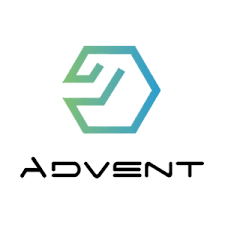

.jpg)


.png)
.png)
.png)
.png)
.jpg)



.jpg)


.jpg)
.png)
.jpg)
.jpg)
.png)
.png)
.png)
.png)

.jpg)
.png)
.jpg)
.jpg)
.png)

.jpg)
.png)
.jpg)
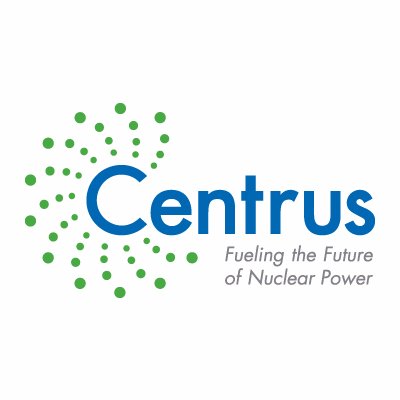
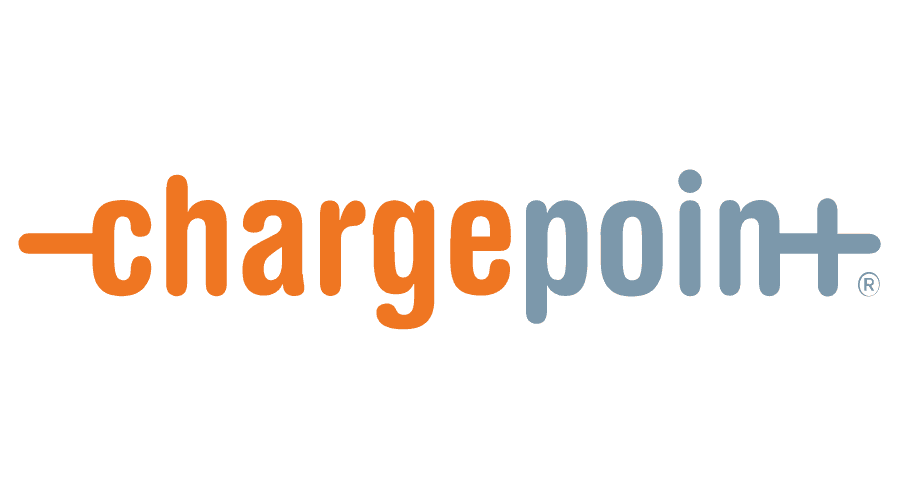

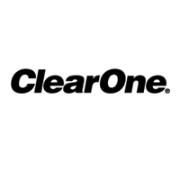
.jpg)

.png)
.png)
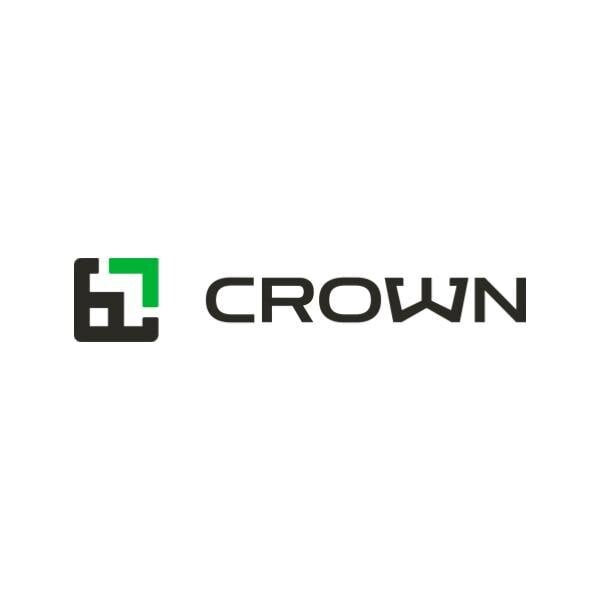
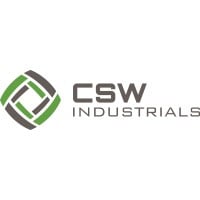
.jpg)
.jpg)
.png)
.png)
.png)
.jpg)
.jpg)

.png)

.png)

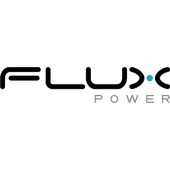

.png)
.jpg)
.png)
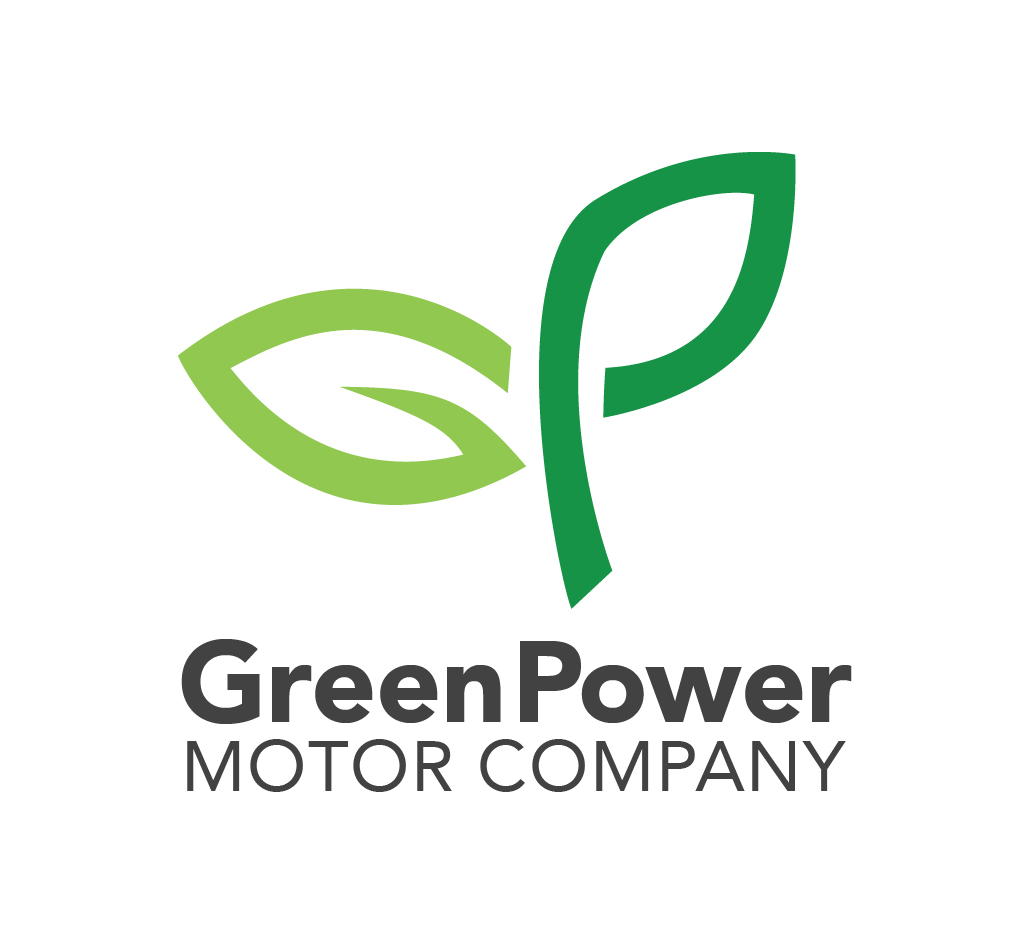
.webp)
.png)

.jpg)
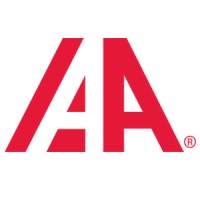
.jpg)
.png)
.png)
.png)
.jpeg)

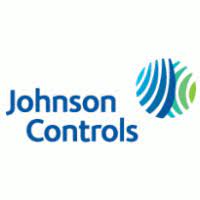
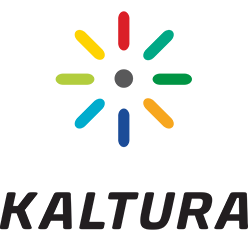
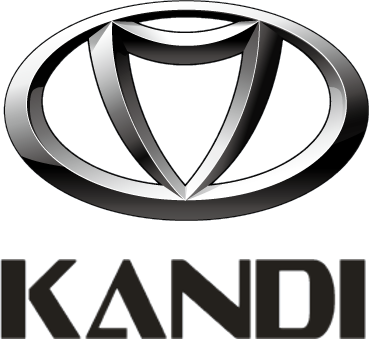
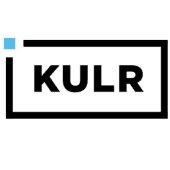
.jpg)
.png)
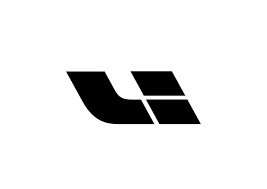
.jpg)

.jpg)
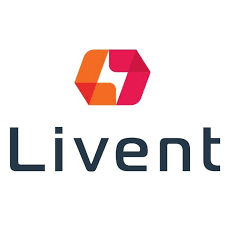
.jpg)
.jpg)
.png)
.jpg)
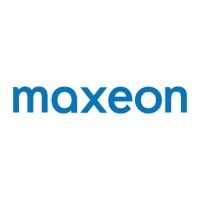
.jpg)

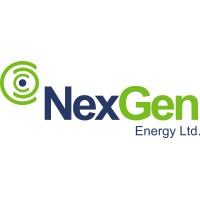
.png)
.png)
.png)
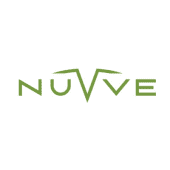
.jpg)
.png)
.png)
.png)
.png)


.png)
.png)
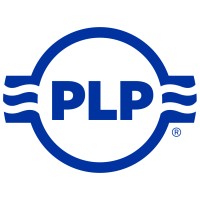
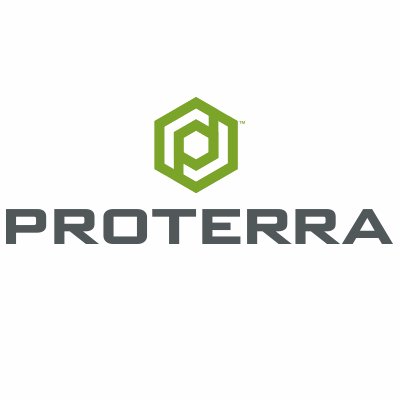
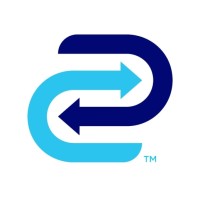

.jpg)
.png)
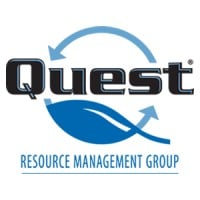
.jpg)
.png)
.png)
.png)
.jpg)

.jpg)
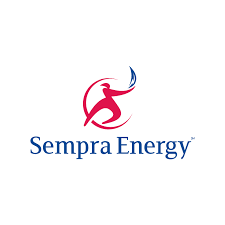

.png)


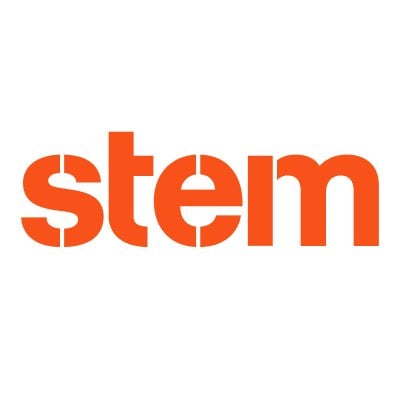
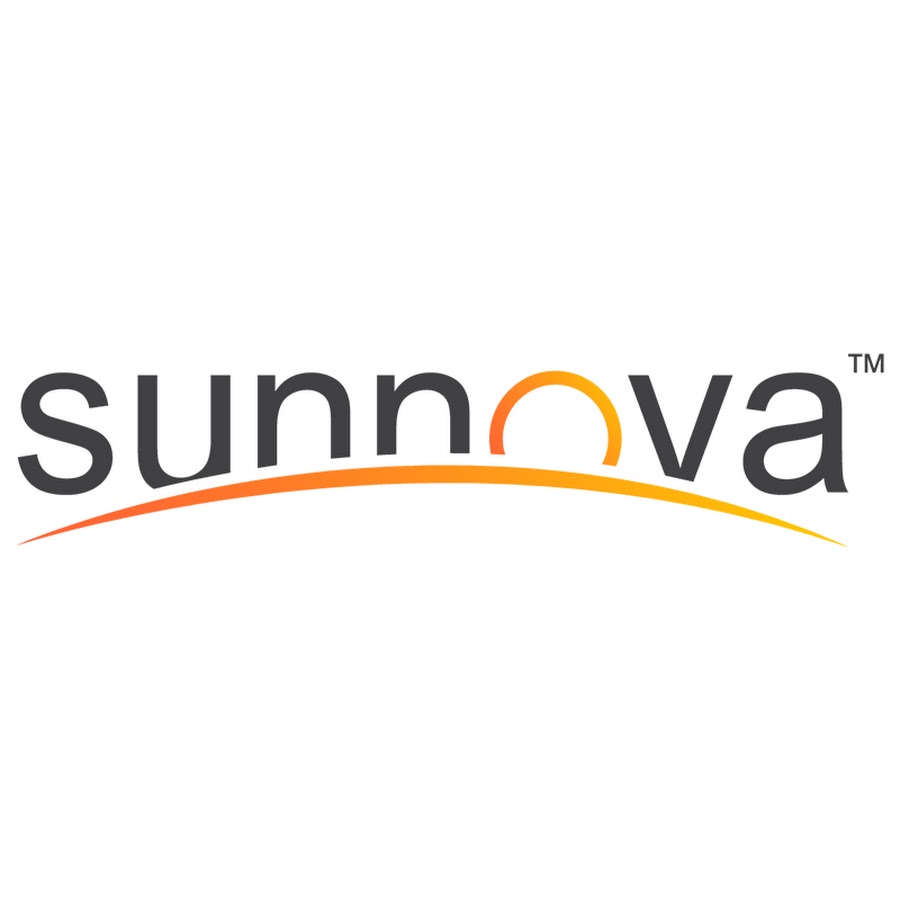
.png)
.jpg)
.png)
.jpg)
.jpg)
.png)
.jpg)
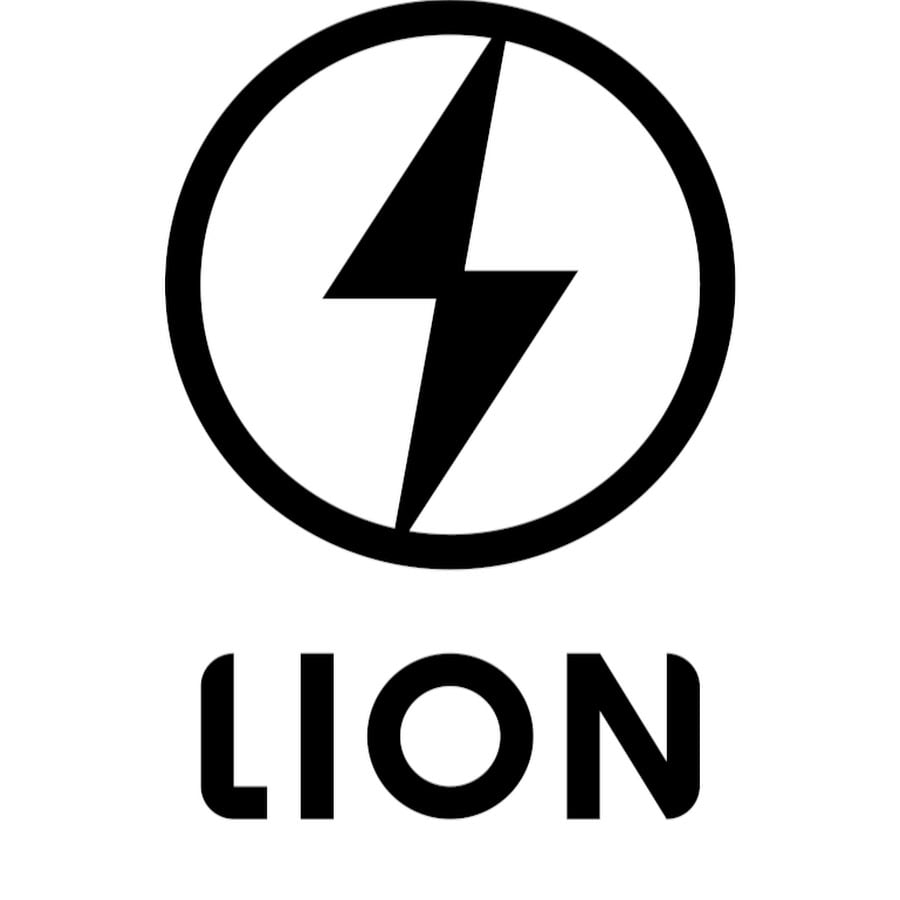
.png)
.png)
.png)
.png)

.jpg)
.png)
.jpg)

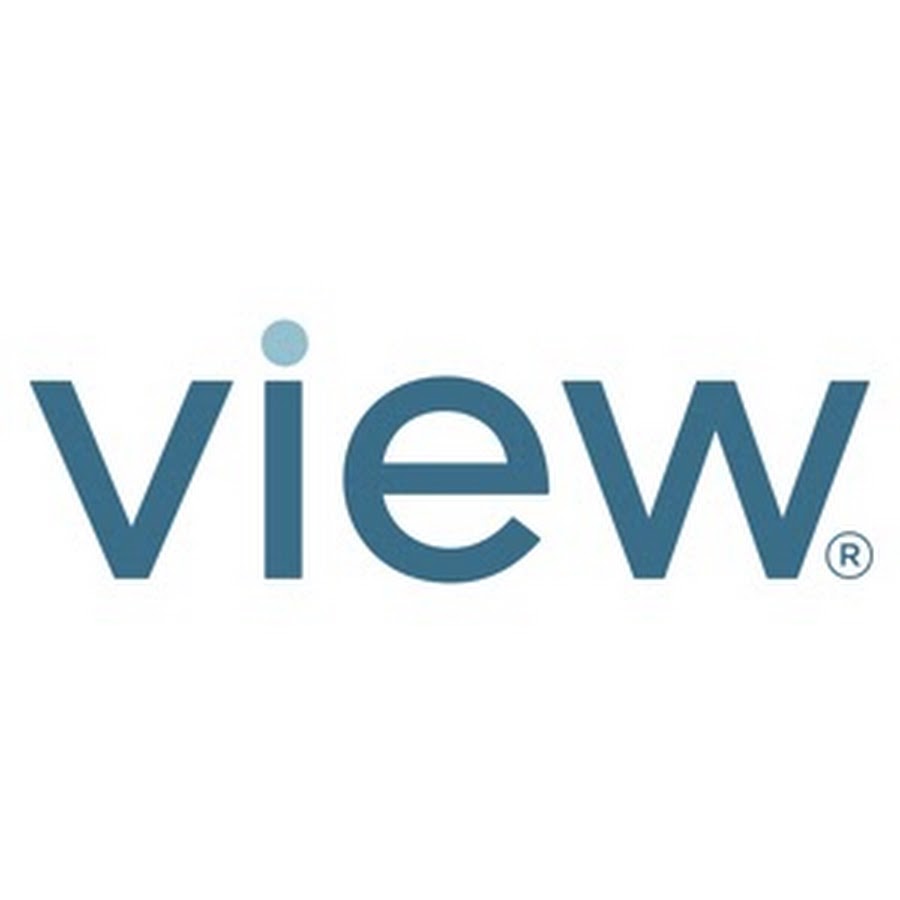
.jpg)
.png)
.png)
.png)

.png)

.png)
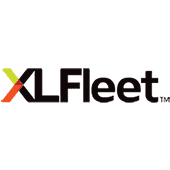

.png)
.png)
